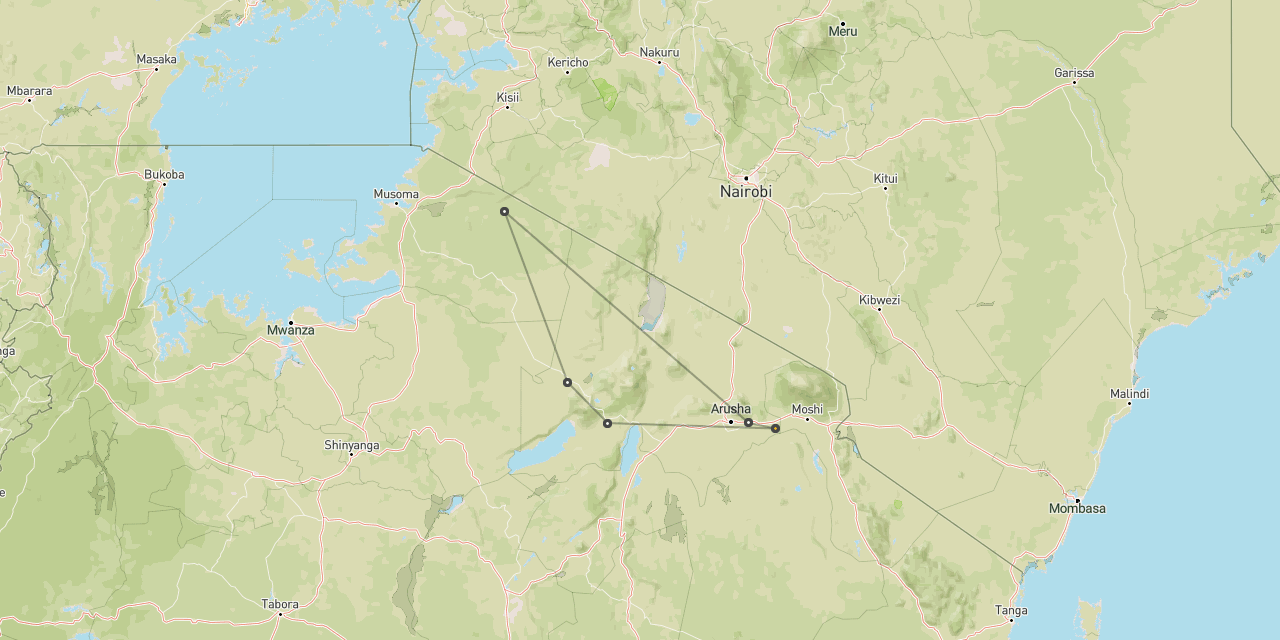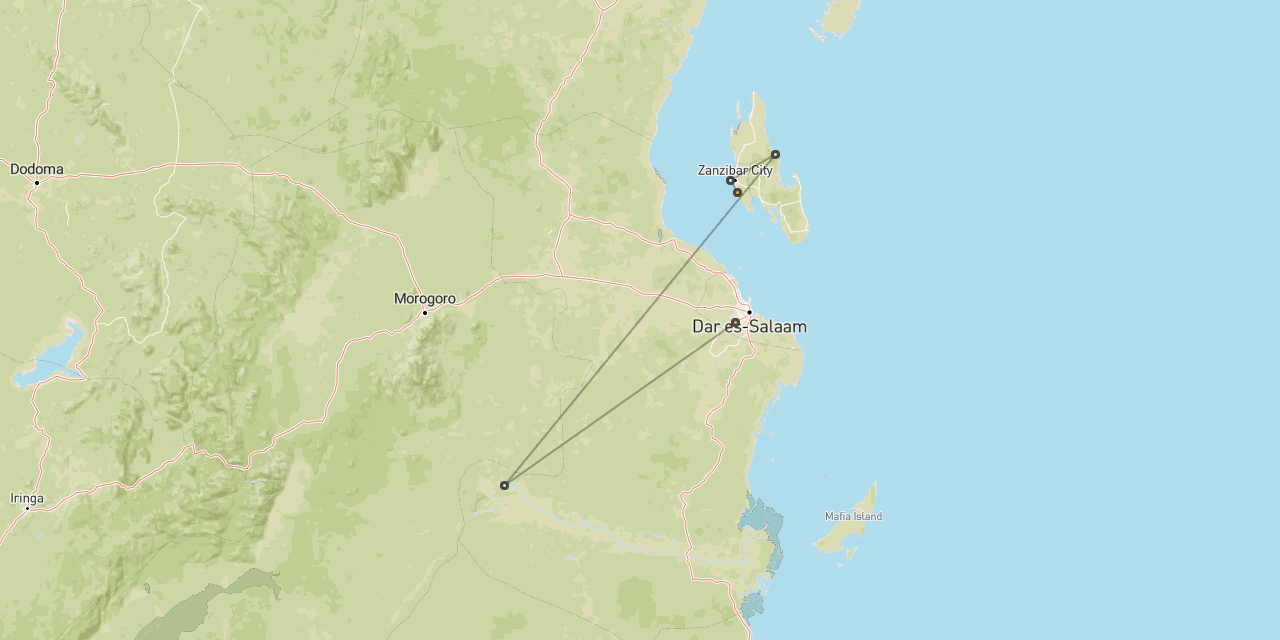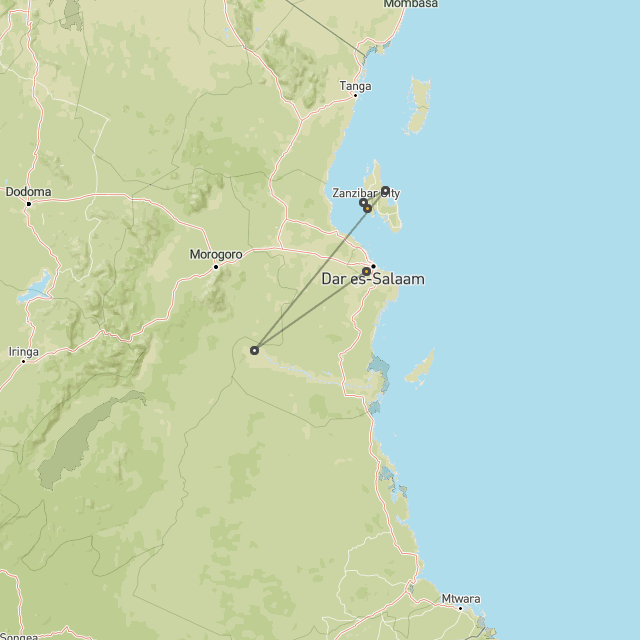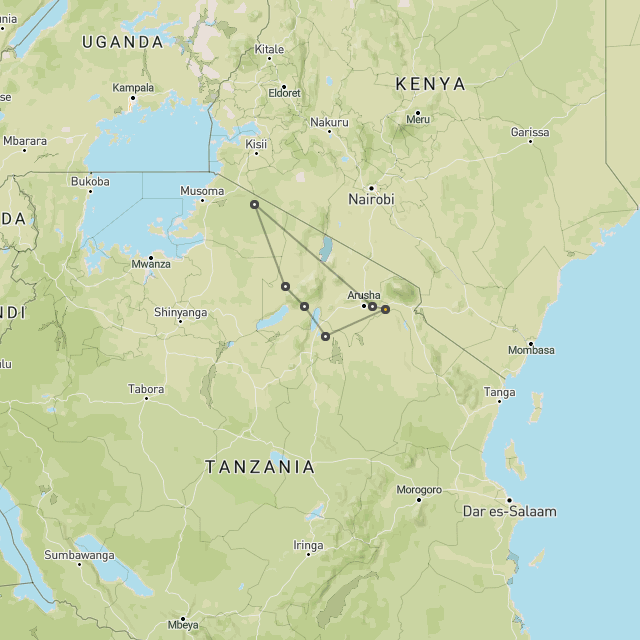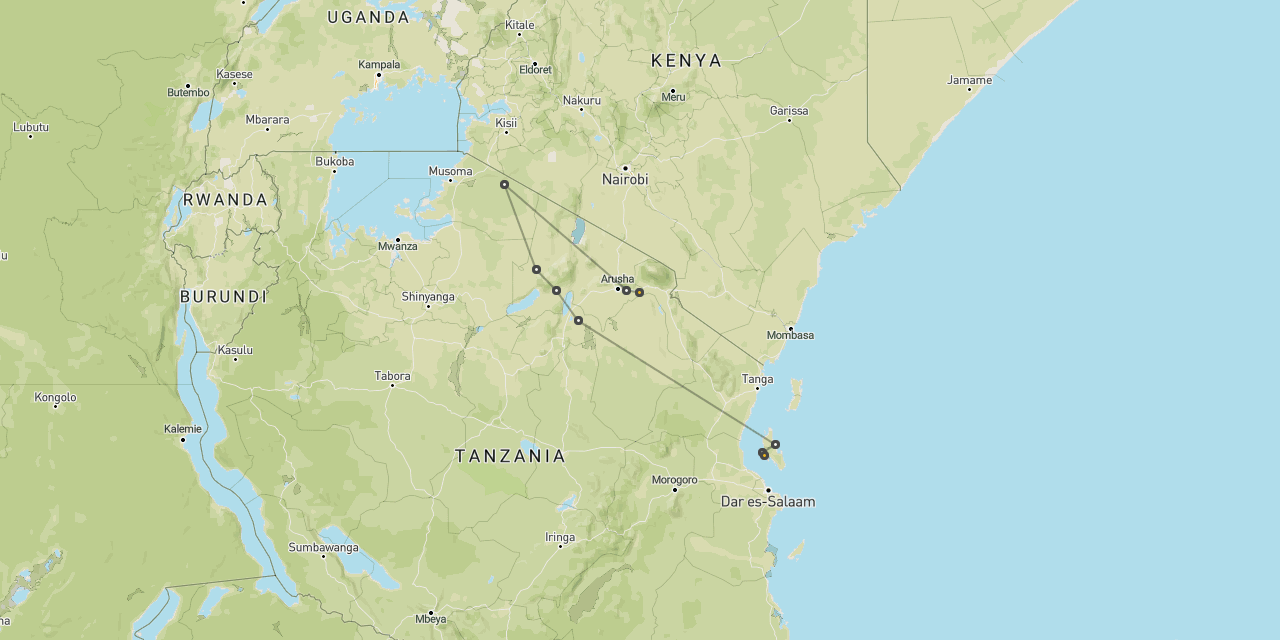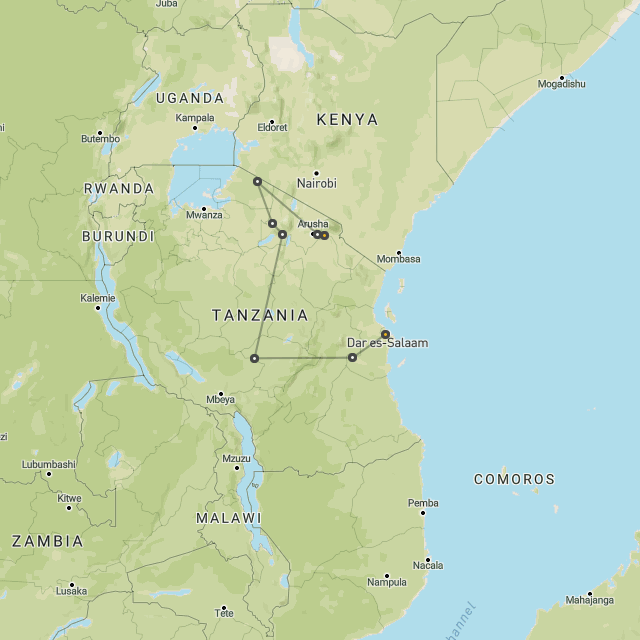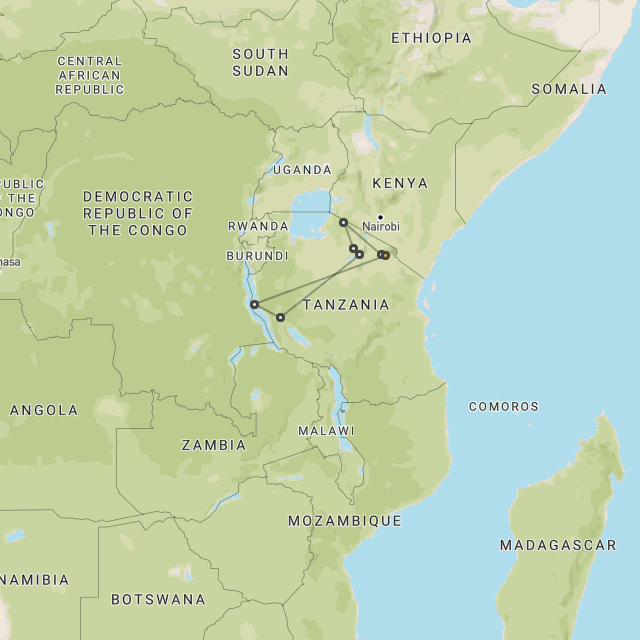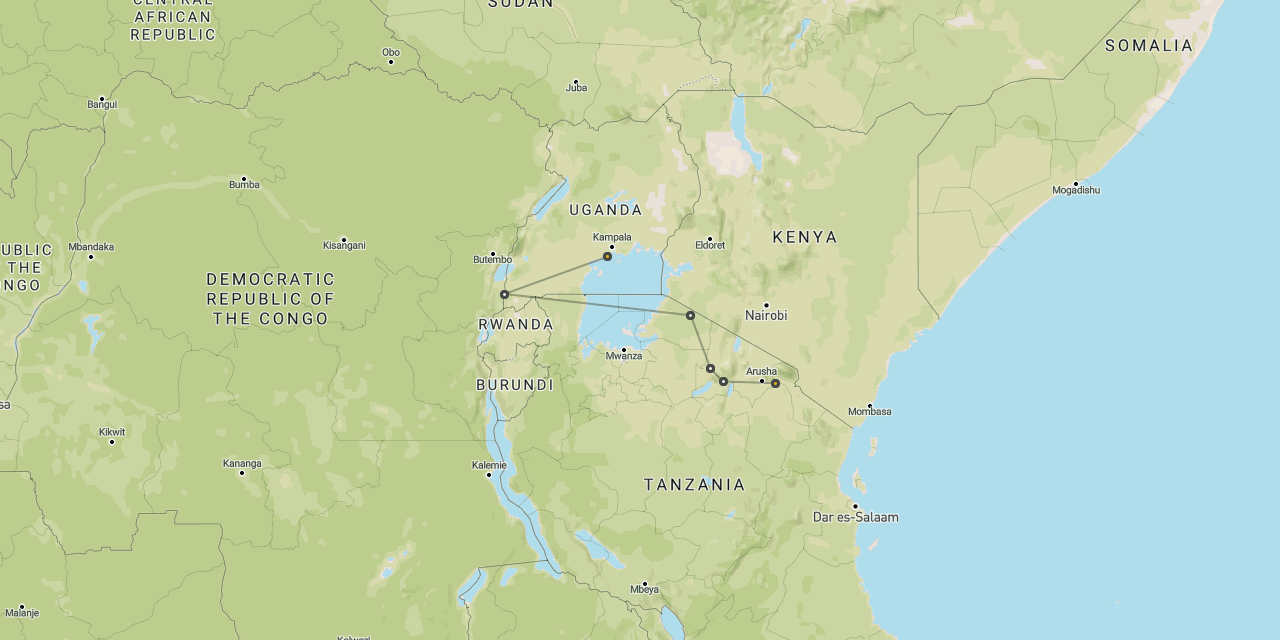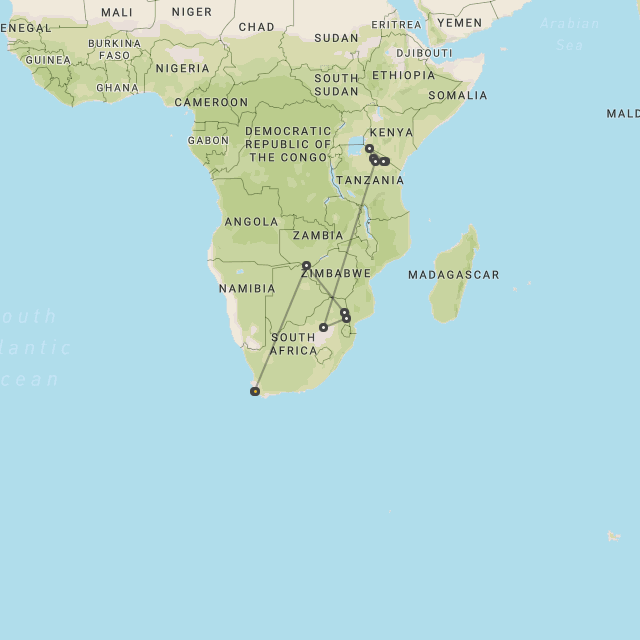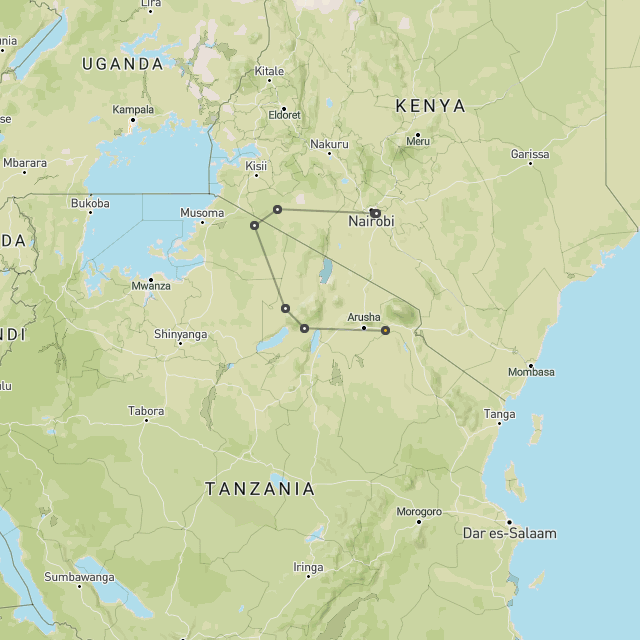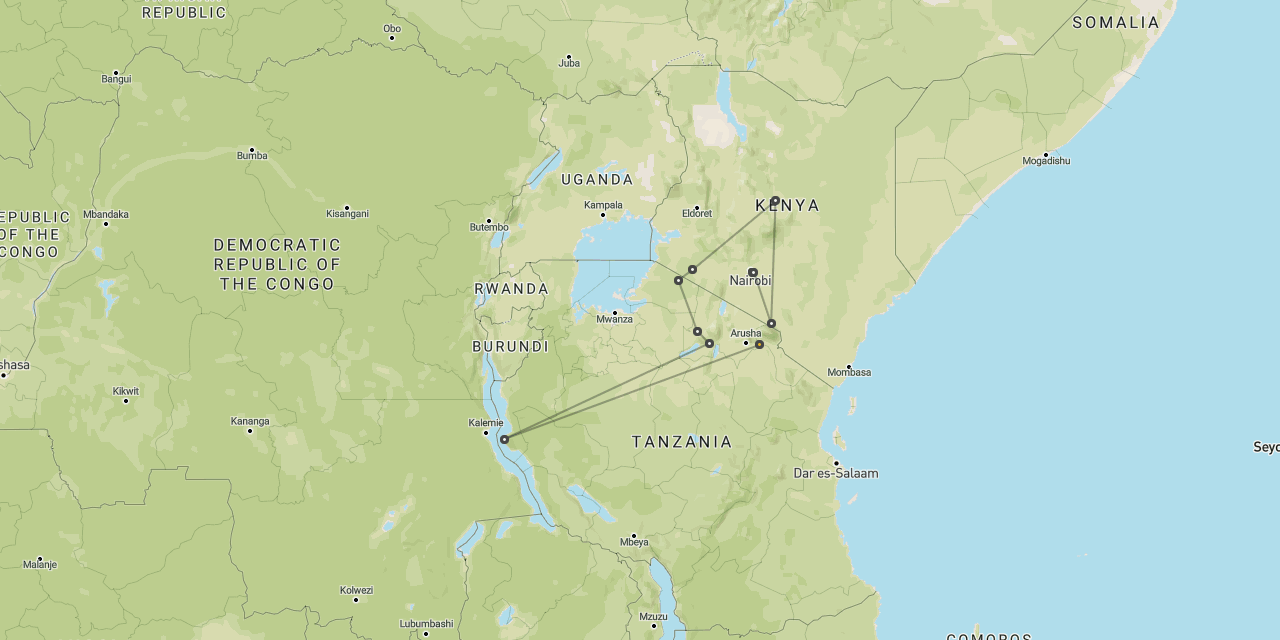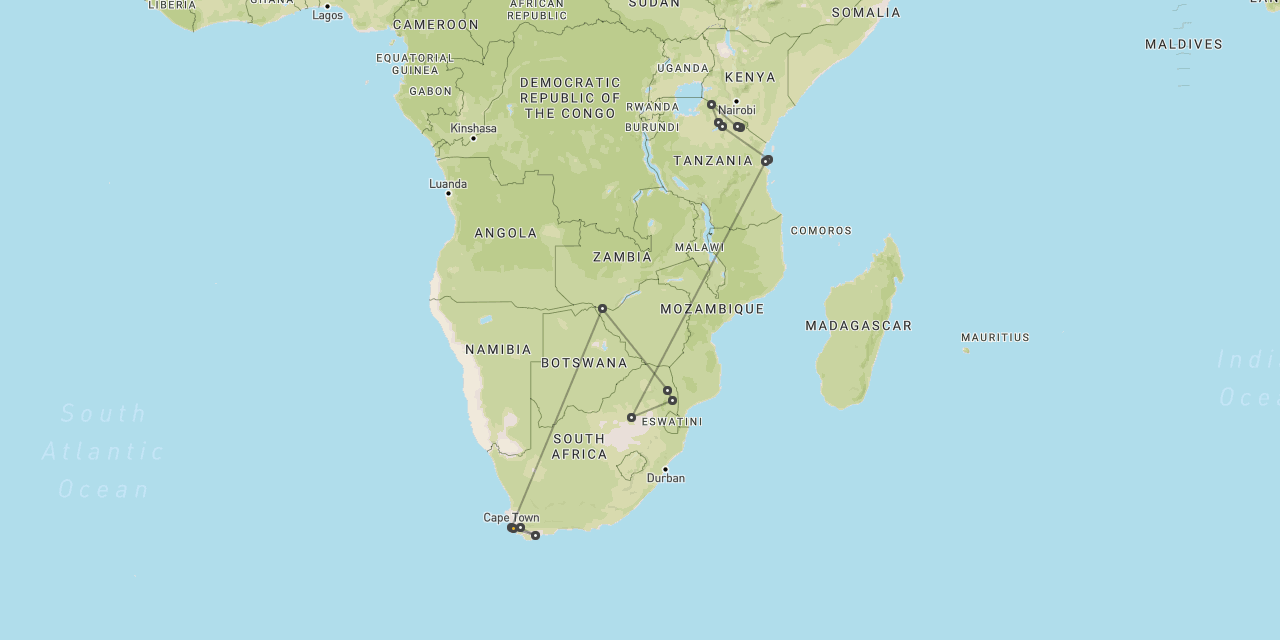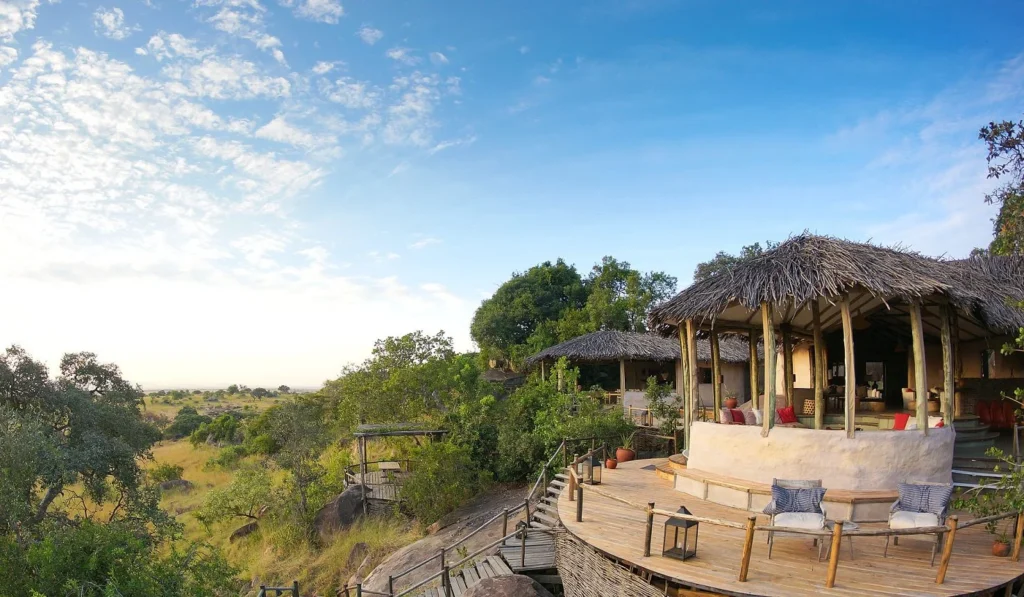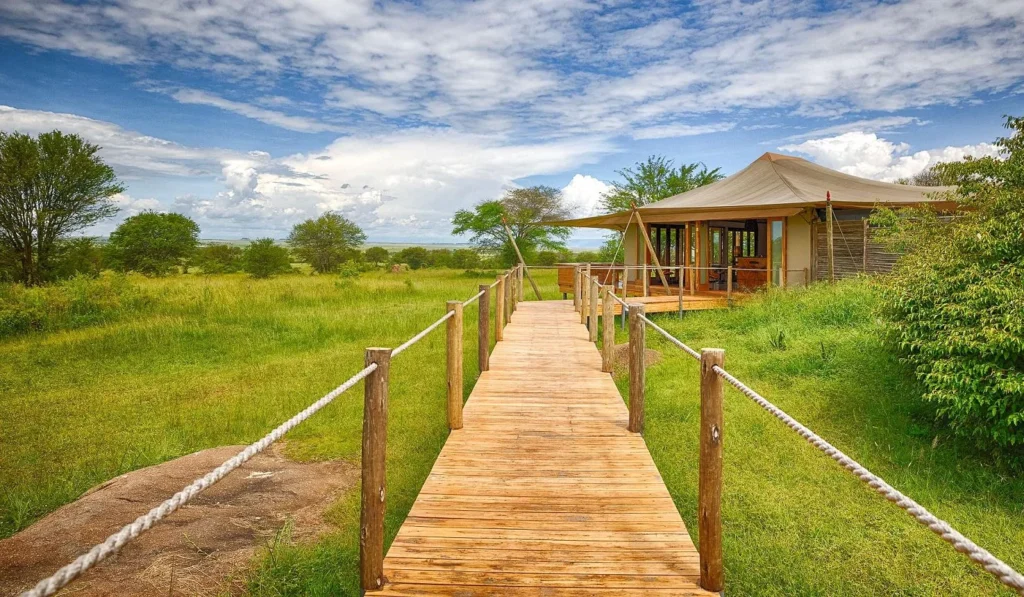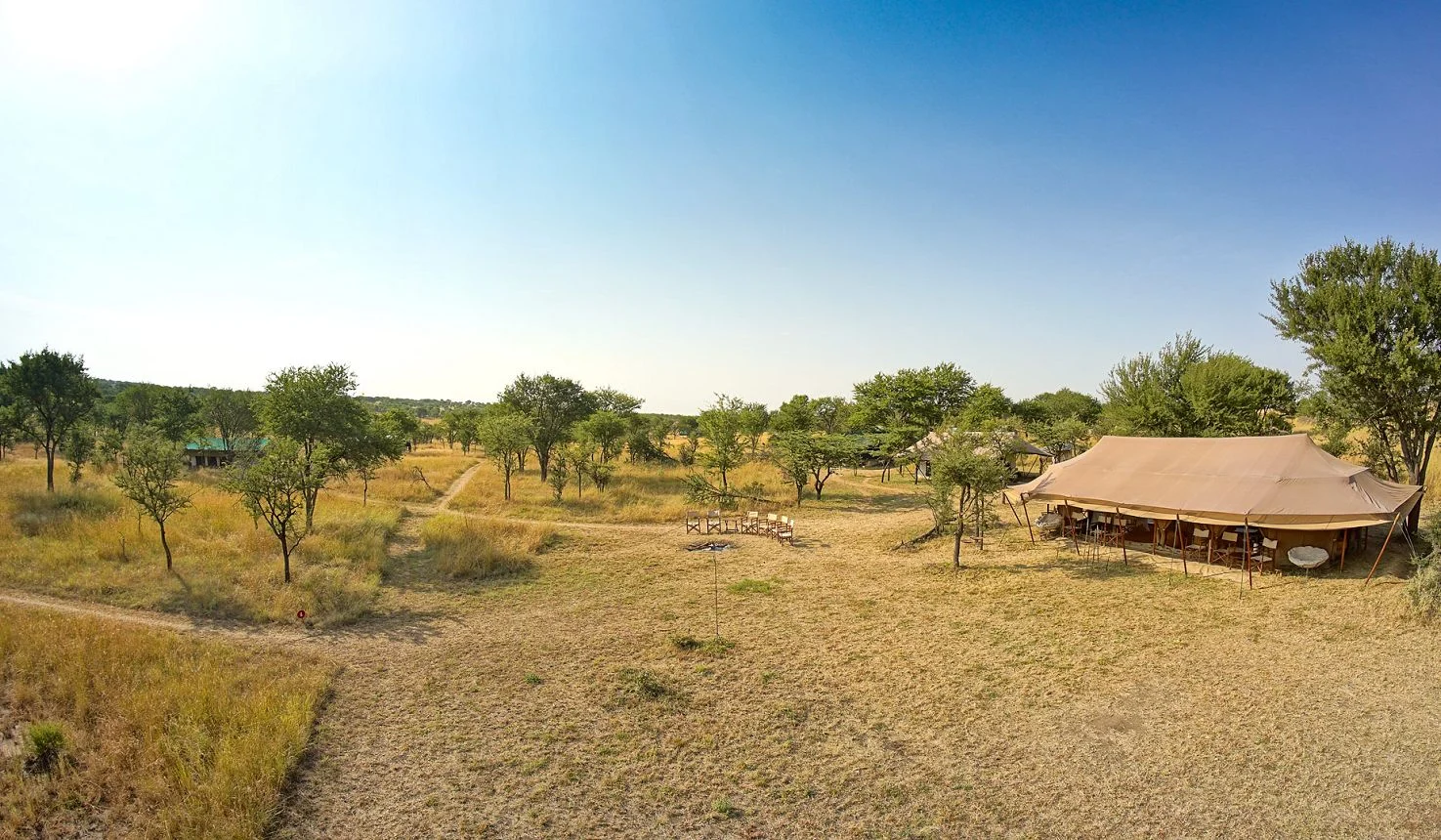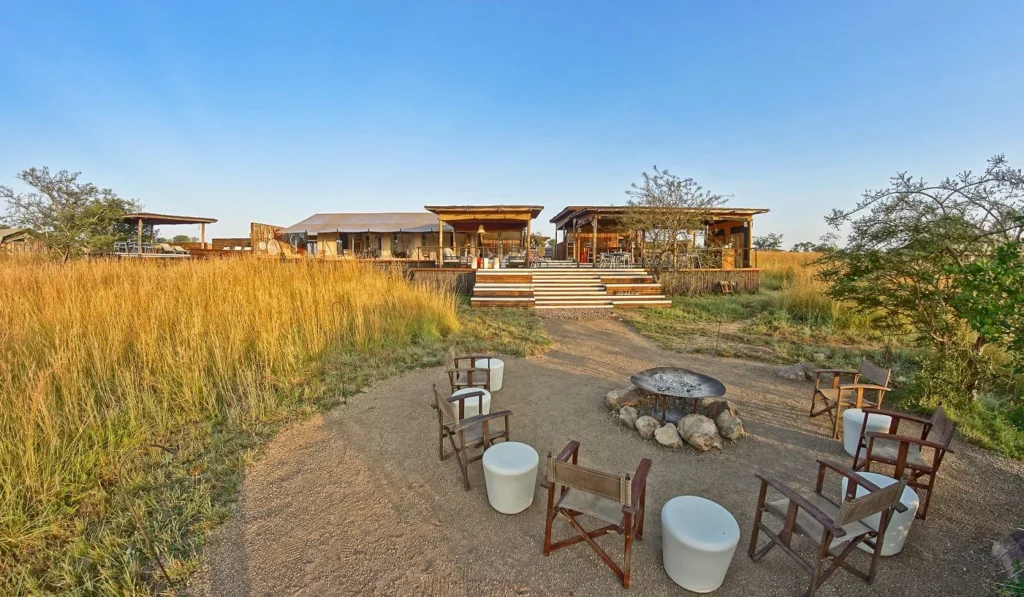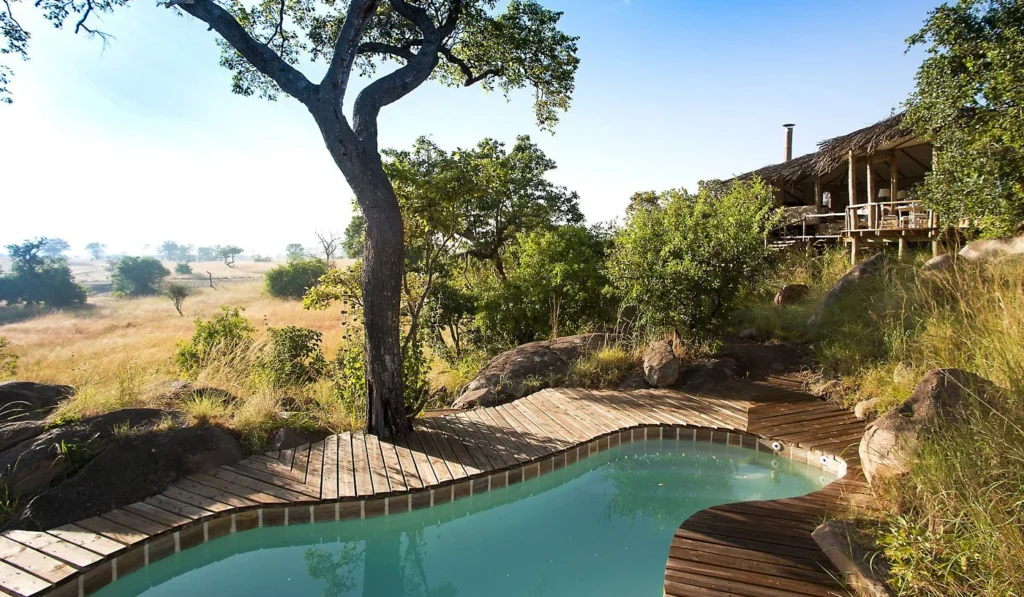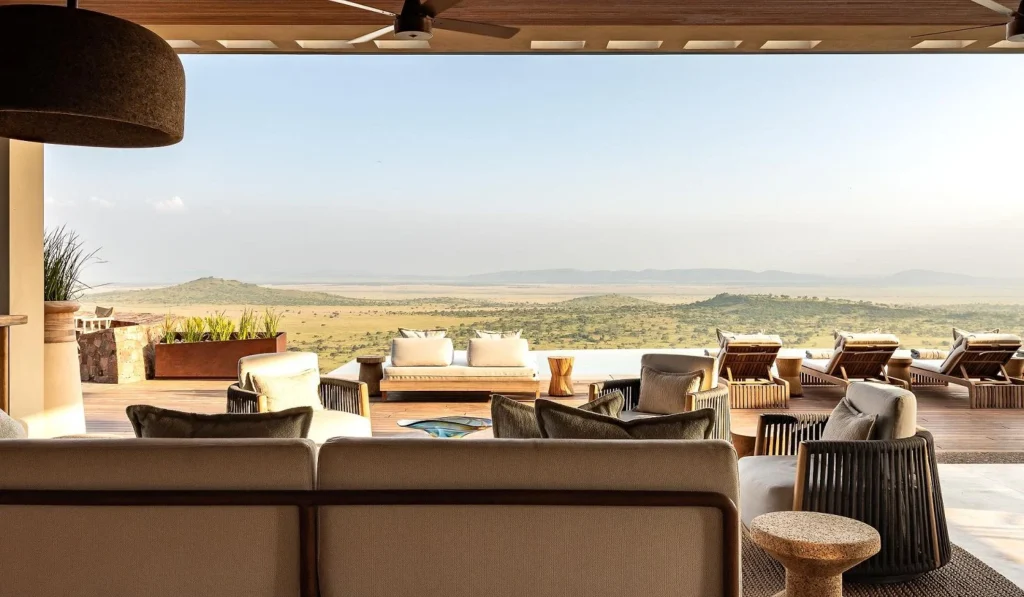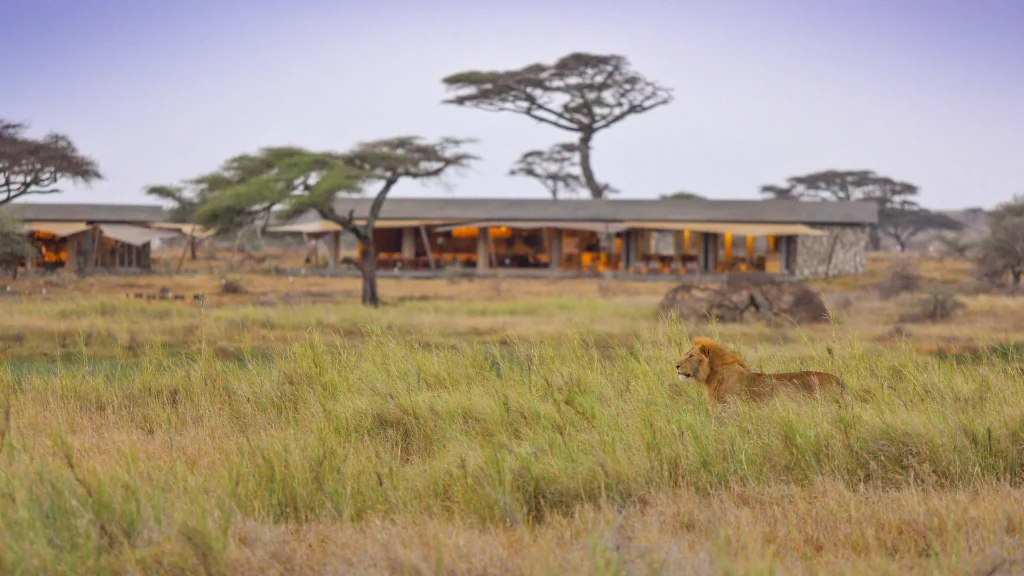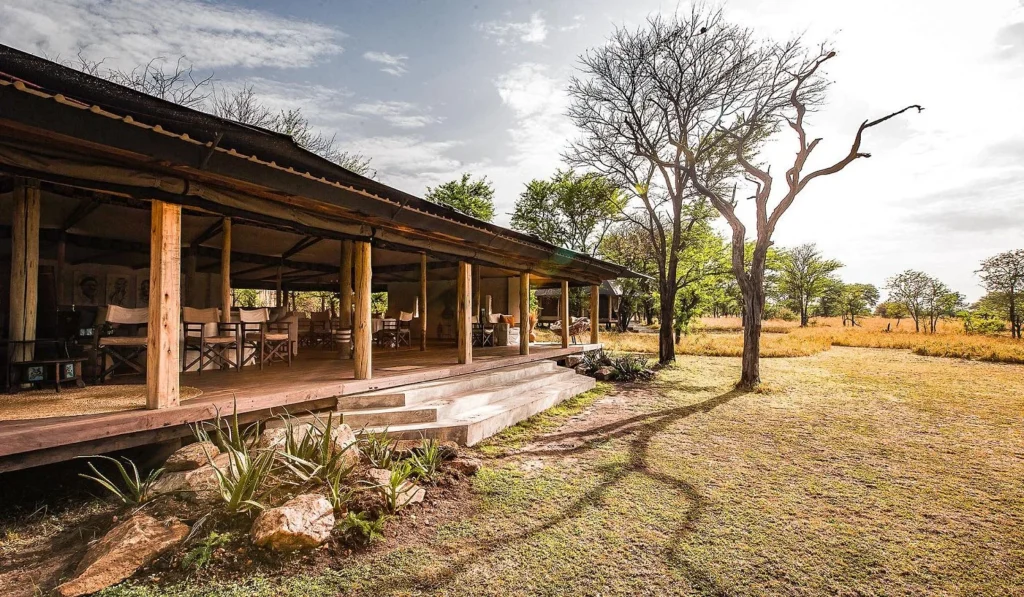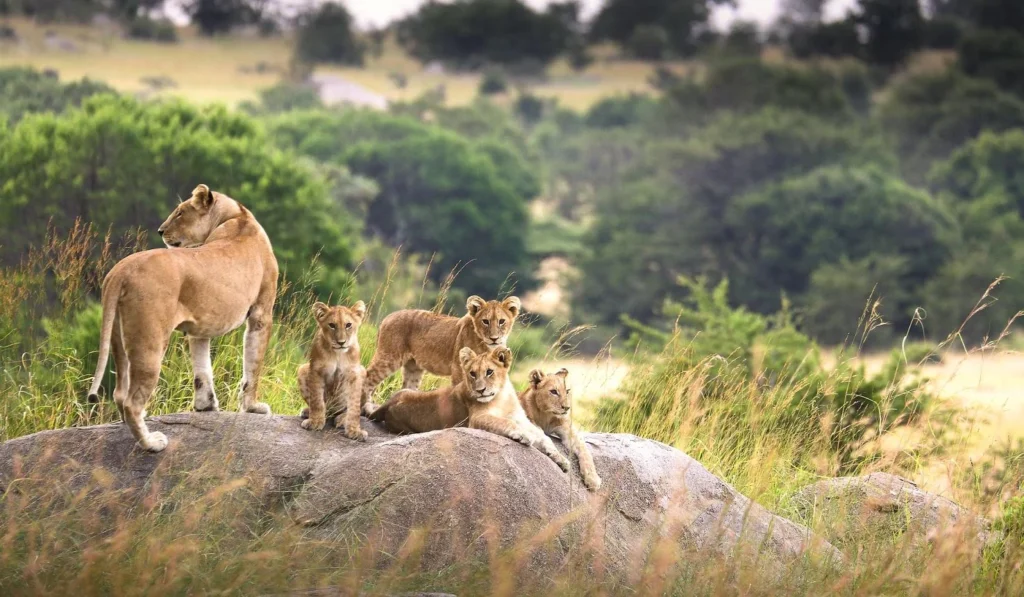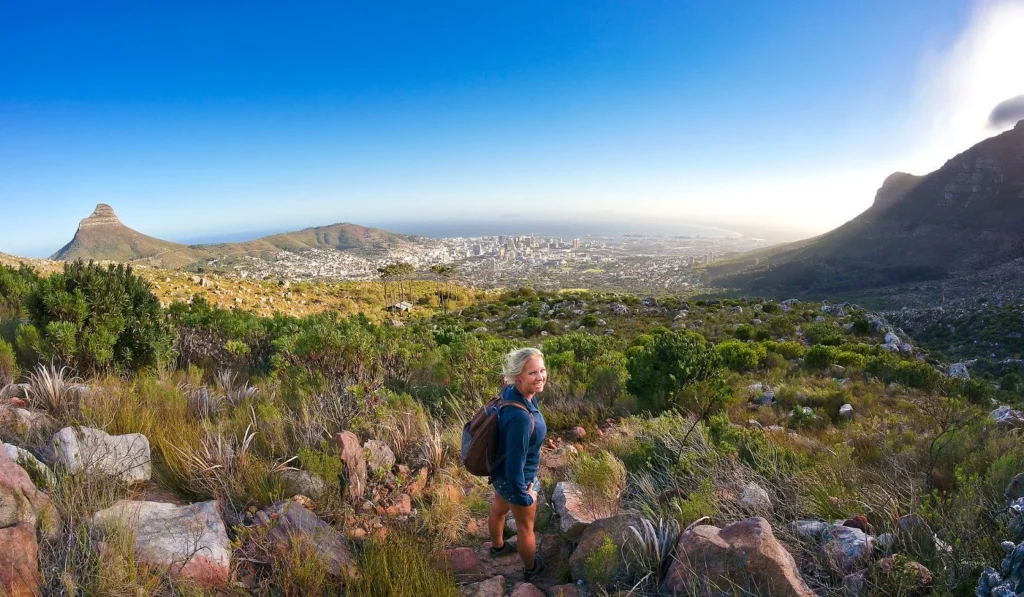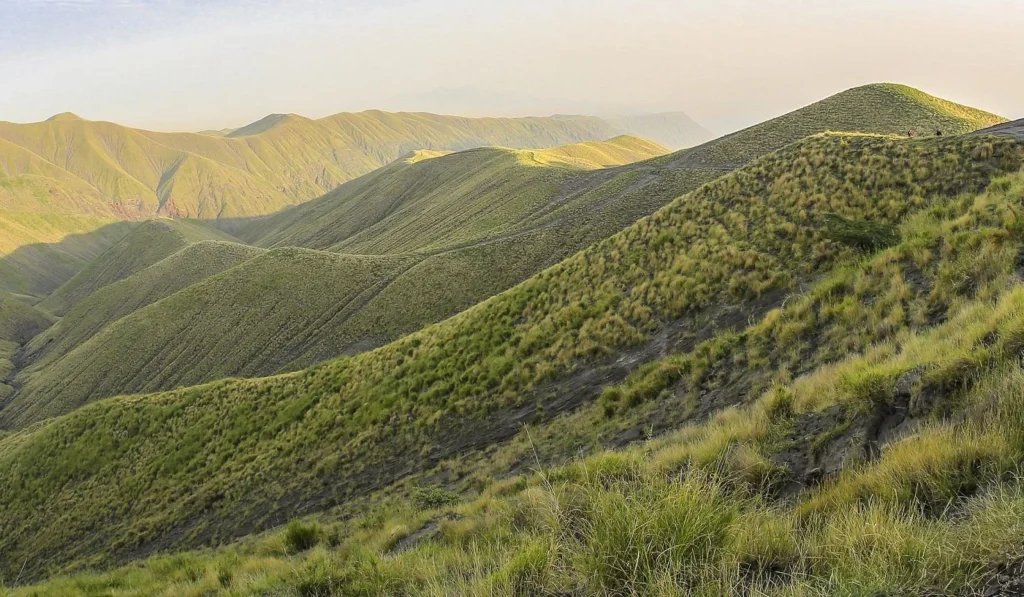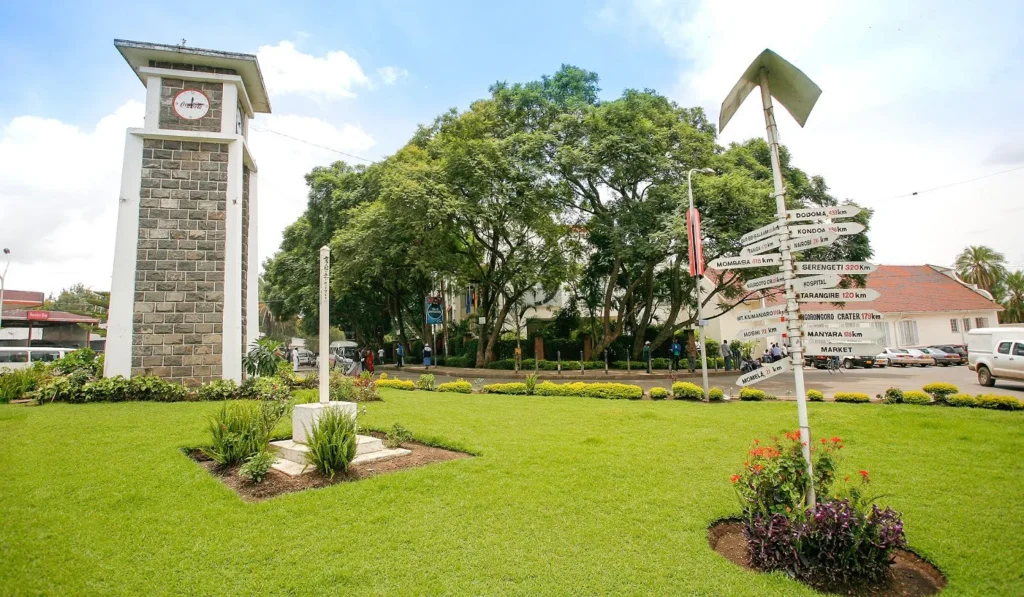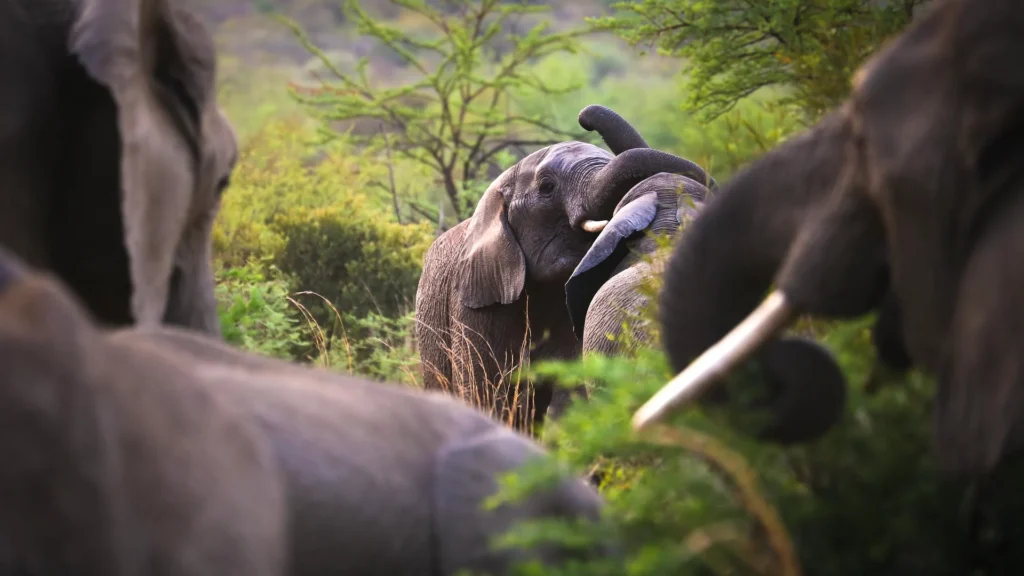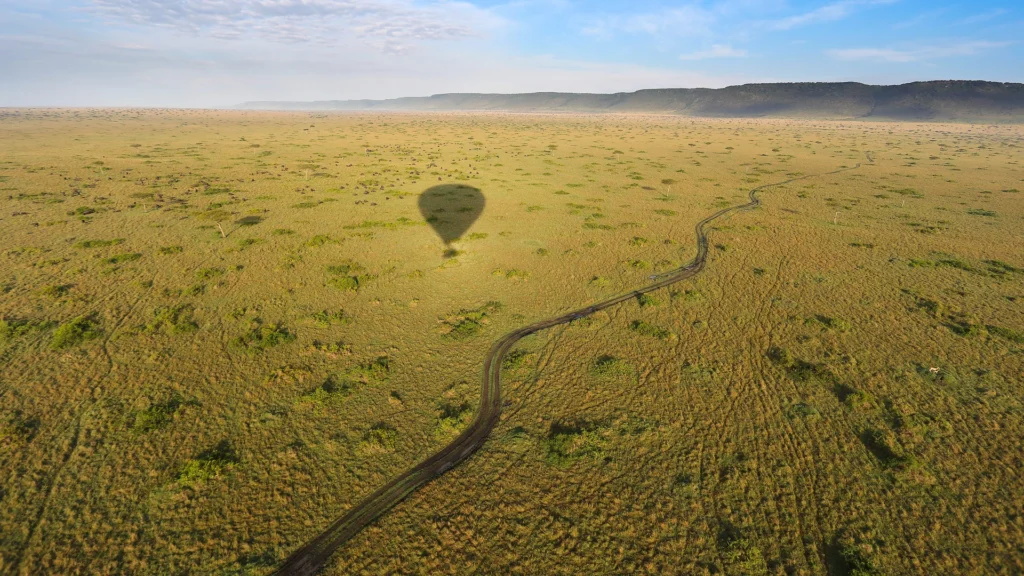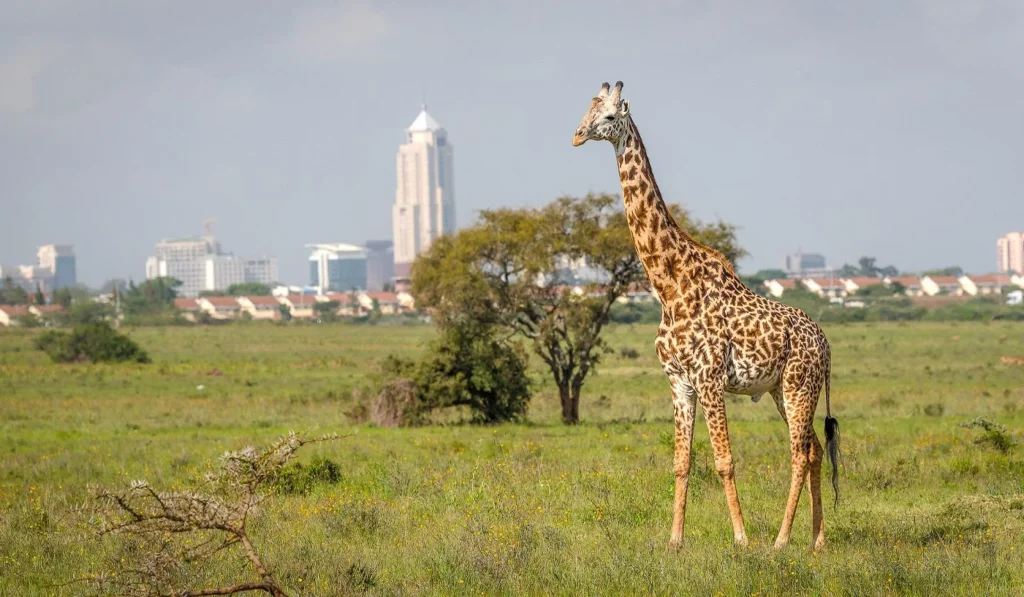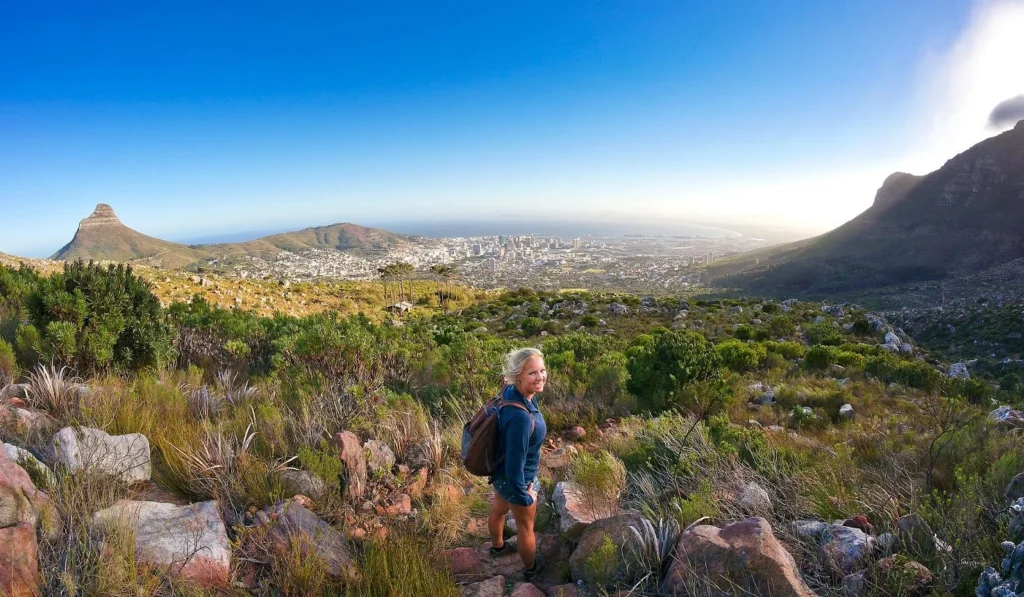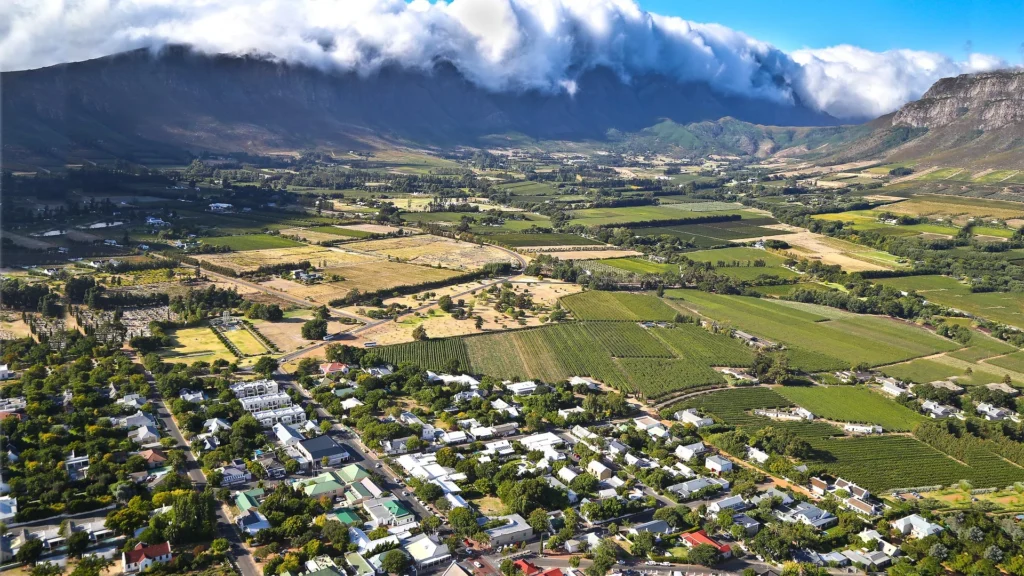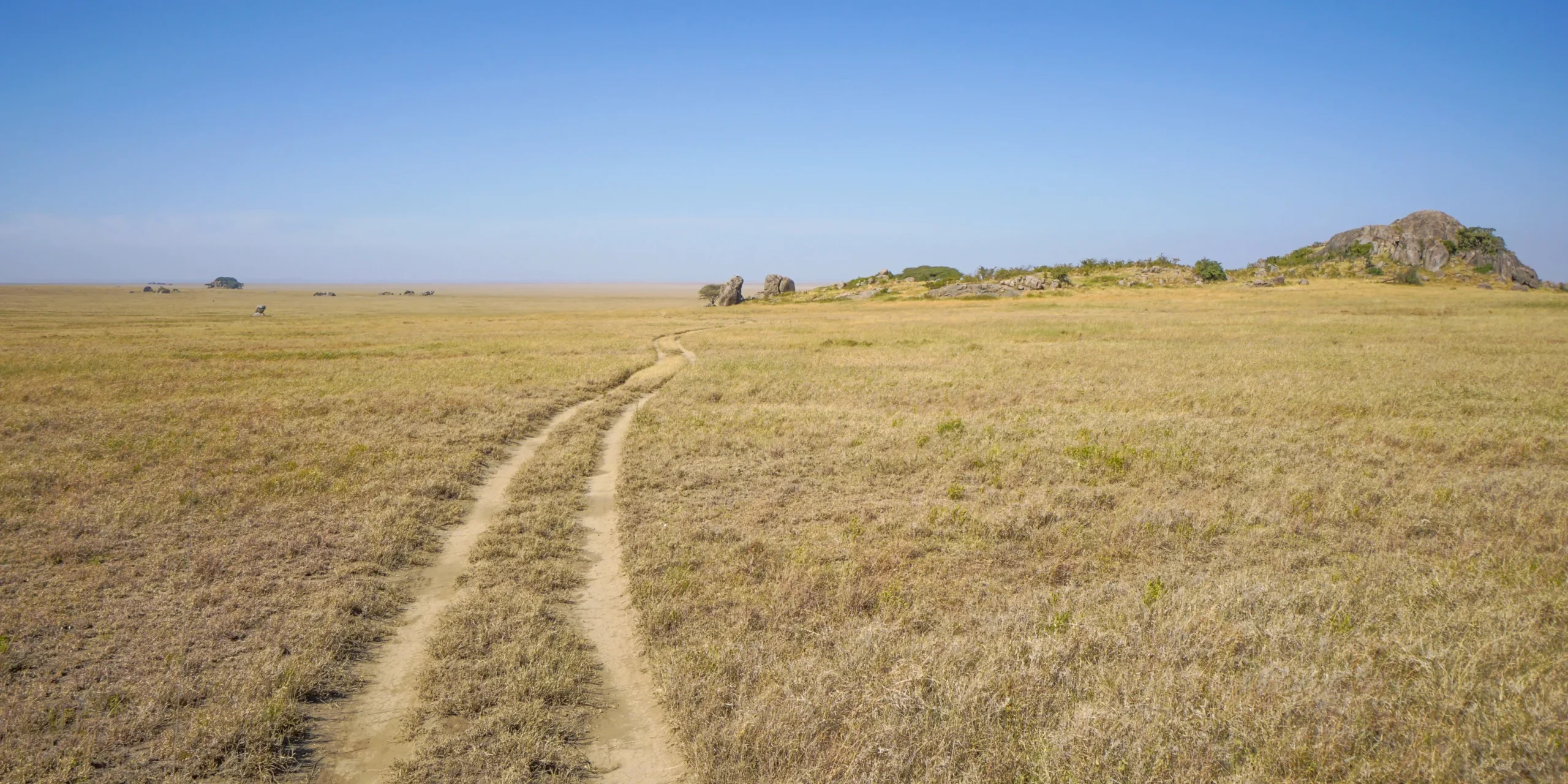
The best time of year for safari in Serengeti
Serengeti
is an incredibly seasonal reserve,
but it’s great year round
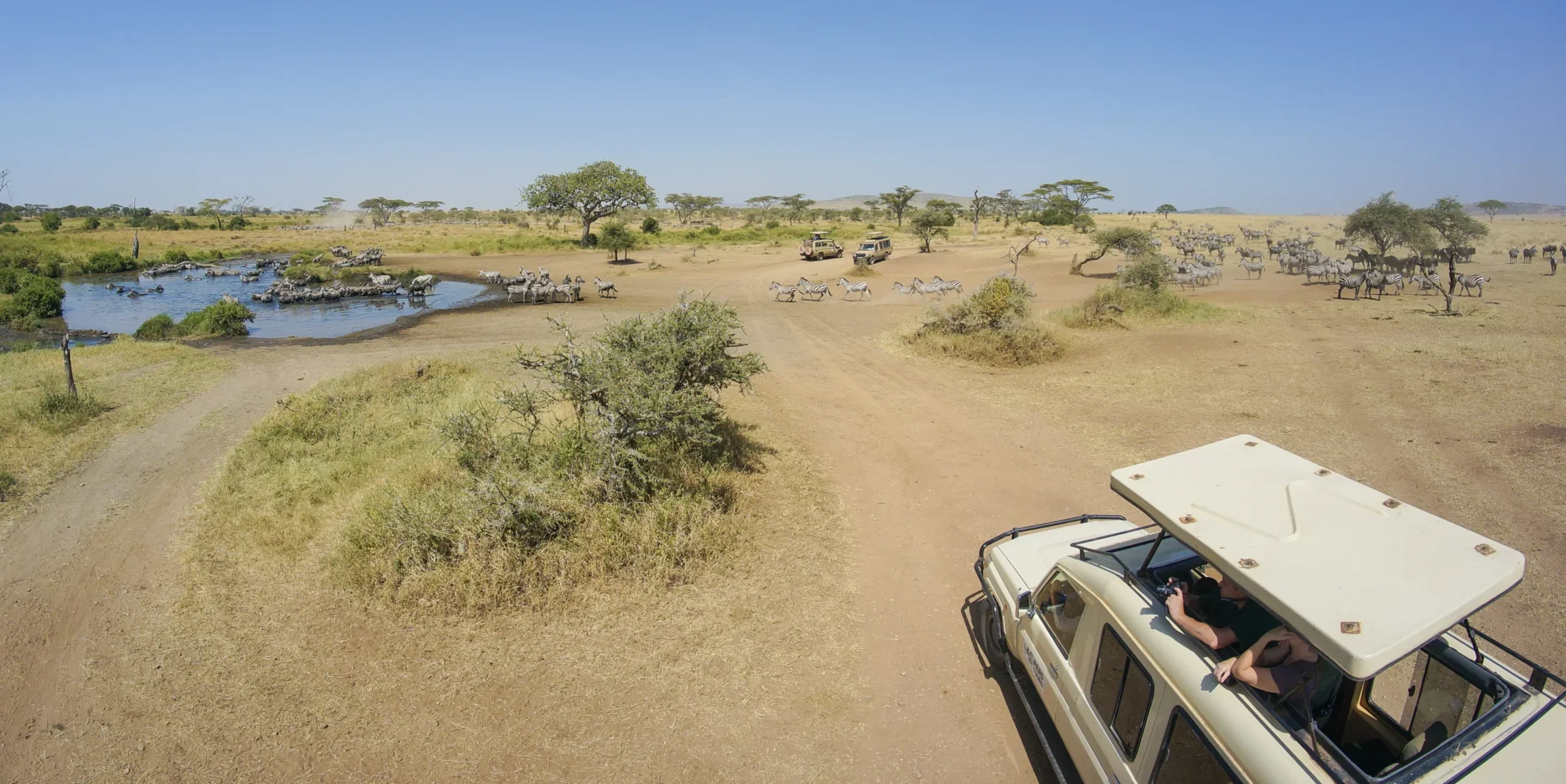
choose a month to suit your specific interests
The Serengeti region has to be the single most seasonal major safari reserve in Africa.
Although there is literally no bad time to visit this part of the world, the annual cycle of weather, wildlife movements and visitor traffic flows combine to have an incredibly dramatic effect on trip planning during every single month of the year.
The best months to visit from a weather and wildlife perspective are generally considered to be the Jun-Oct dry season.
Another major highlight is the migration calving season during the Dec-Mar green season, although the weather can be less reliable.
The two low season periods of Nov-Dec and Mar-May may be much less dependable for weather, but they remain really strong for wildlife viewing and benefit from dramatically lower visitor numbers.
The bottom line is that, no matter what time of year you want to visit, the Serengeti will deliver. When done properly, it is epic.
January is generally considered to be a good month to visit the Serengeti, with the start of the migration calving season in the south and some blissfully quiet backwaters in the north.
Conditions
Average daily temperature : 27C/81F
Average nightly temperature : 15C/59F
Rainfall : 90mm/3.6″ : medium
Temperatures and humidities are pretty constant and comfortable year round in Serengeti. The prevailing conditions are warm and sunny, but during this period there is a likelihood of intermittent showers and chances of heavier downpours and prolonged overcast conditions.
Migration
The key action migration action areas at this time are Serengeti Southwest, Serengeti Southcentral and Serengeti Southeast.
By now the main herds should have arrived onto southern plains, where occasional rain showers should have caused the sprouting of the nutritious short grasses that they crave. This in turn should trigger the wildebeest and zebras to go into calf, with up to 250,000 youngsters being born over the space of a few short weeks. This spectacle is inevitably accompanied by a glut of predator action, as lions, cheetahs, hyenas and wild-dogs move in to take advantage of the glut of easy pickings.
Resident wildlife
Elsewhere in the Serengeti, wildlife viewing is likely to be down from the dry-season highs, the rains enabling animals to move away from the permanent water sources and become more dispersed.
Visitor traffic
Visitor numbers during the first few days of January remain very high, mainly focused on central areas and in the migration areas around Ndutu in the Southwest, meaning that traffic avoidance measures are recommended, namely booking well in advance to ensure rooms at the best lodges and choosing your safari routes carefully.
Following that the numbers tend to drop of precipitously to only medium levels, building back slightly towards the end of the month, although the core Ndutu area can remain relatively busy throughout.
The Serengeti Mara area far off to the north remains a blissful backwater throughout January, with strong resident wildlife.
early migration calving season
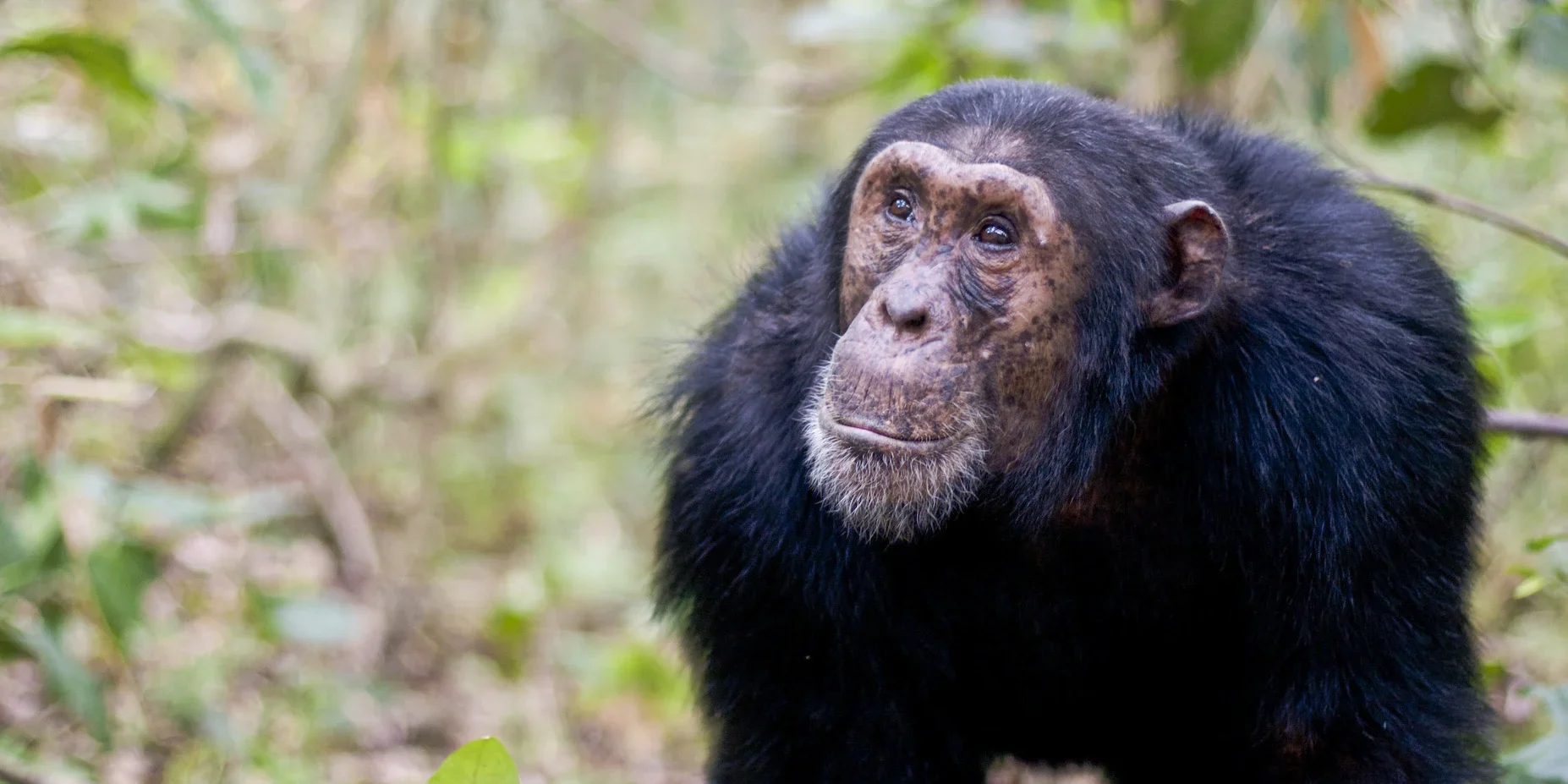
February is generally considered to be a very good month to visit the Serengeti, with the migration calving season in the south and some blissfully quiet backwaters in the north.
Conditions
Average daily temperature : 27C/81F
Average nightly temperature : 15C/59F
Rainfall : 100mm/4.0″ : high
Temperatures and humidities are pretty constant and comfortable year round in Serengeti. The prevailing conditions are warm and sunny, but during this period there is a likelihood of intermittent showers and chances of heavier downpours and prolonged overcast conditions.
Migration
The key action migration action areas at this time are Serengeti Southwest, Serengeti Southcentral and Serengeti Southeast.
By now the main herds should be settled on the southern plains, happily grazing on the nutritious short grasses that they crave and well into their calving season, with up to 250,000 youngsters being born over the space of a few short weeks. This spectacle is inevitably accompanied by a glut of predator action, as lions, cheetahs, hyenas and wild-dogs move in to take advantage of the glut of easy pickings.
Resident wildlife
With reference to resident wildlife elsewhere in the Serengeti the wildlife viewing is likely to be down from the dry-season highs, the rains enabling animals to stay away from the permanent water sources and remain more dispersed.
Visitor traffic
Visitor numbers usually remain quite high at this time of year, boosted by guests drawn specifically by the migration calving events. This traffic is heavily focussed on the Ndutu area, meaning that traffic avoidance measures are recommended, namely booking well in advance to ensure rooms at the best lodges and choosing your safari routes carefully.
The Serengeti Mara area far off to the north remains a blissful backwater in February and still has strong resident wildlife.
peak green season migration calving
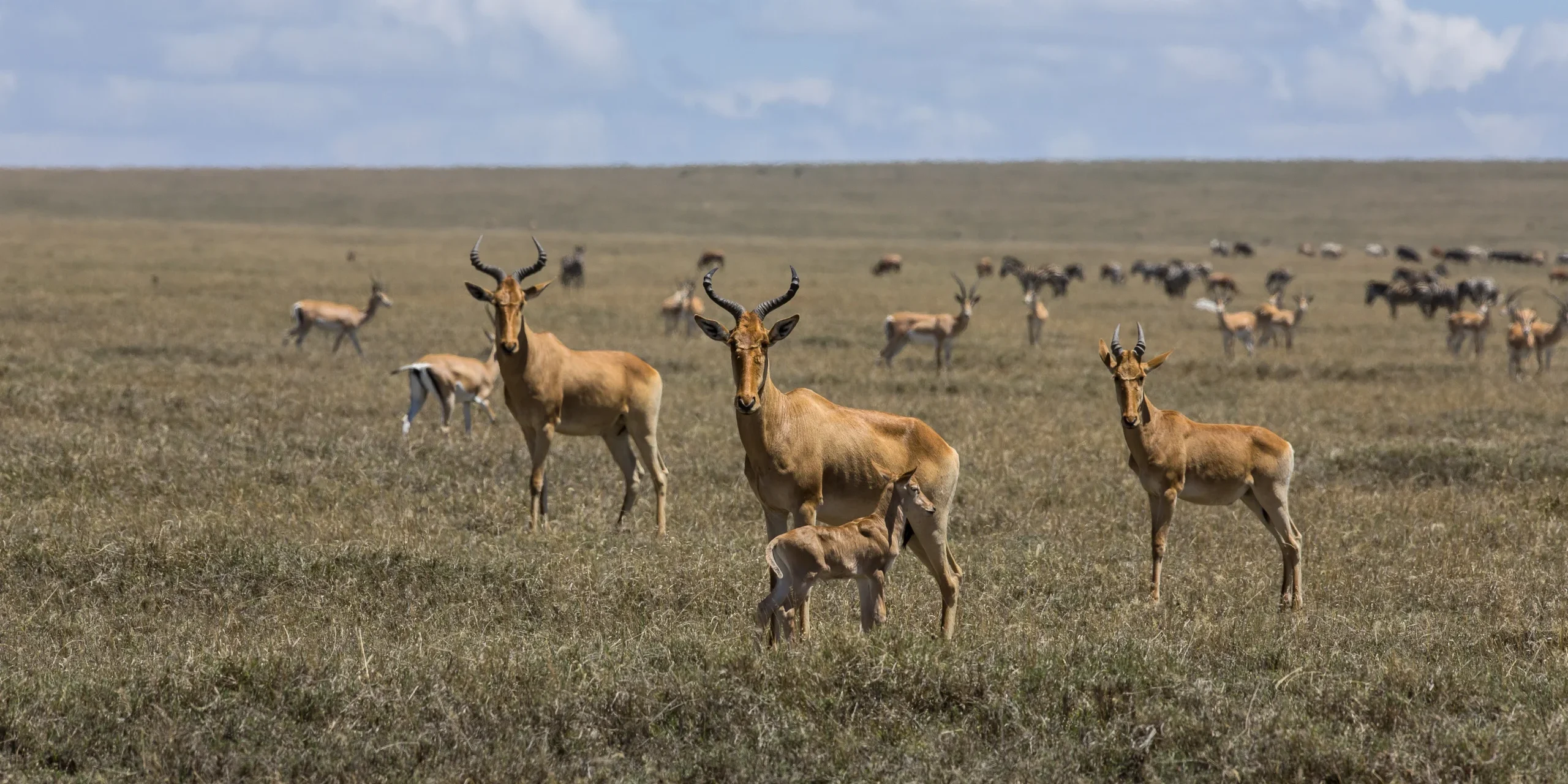
March is generally considered to be a good month to visit the Serengeti, with the migration calving season in the south and some blissfully quiet backwaters in the north, but with increased chances of rain.
Conditions
Average daily temperature : 27C/81F
Average nightly temperature : 16C/61F
Rainfall : 135mm/5.3″ : very high
Temperatures and humidities are pretty constant and comfortable year round in Serengeti. The prevailing conditions are warm and sunny, but during this period there is a likelihood of regular showers and significant chances of heavier downpours and prolonged overcast conditions.
Migration
The key action migration action areas at this time are Serengeti Southwest, Serengeti Southcentral and Serengeti Southeast.
By now the main herds should still be settled on the southern plains, happily grazing on the nutritious short grasses that they crave and reaching the end of their calving season. The herds and their youngsters continue to be hounded by a glut of predator action, as lions, cheetahs, hyenas and wild-dogs move in to take advantage of the glut of easy pickings.
Resident wildlife
With reference to resident wildlife elsewhere in the Serengeti the wildlife viewing is likely to be down from the dry-season highs, the rains enabling animals to stay away from the permanent water sources and remain more dispersed.
Visitor traffic
Visitor numbers usually remain quite high at this time of year, boosted by guests drawn specifically by the migration calving events. This traffic is heavily focussed on the Ndutu area, meaning that traffic avoidance measures are recommended, namely booking well in advance to ensure rooms at the best lodges and choosing your safari routes carefully.
The Serengeti Mara area far off to the north remains a blissful backwater in March and still has strong resident wildlife.
late migration calving, early rains

April is generally considered to be a less favourable month to visit the Serengeti due to the high chances of rain, but with major migration action and wonderfully low visitor numbers.
Conditions
Average daily temperature : 26C/79F
Average nightly temperature : 16C/61F
Rainfall : 140mm/5.6″ : very high
Temperatures and humidities are pretty constant and comfortable year round in Serengeti. The prevailing conditions remain largely warm and sunny, but during this period there is a likelihood of torrential downpours and prolonged overcast conditions.
Migration
The key action migration action areas at this time are Serengeti Southwest and Serengeti Central.
By now the main herds should be starting to think about heading north, an event which will be triggered by the end of the prime grazing on the short-grass plains to the south and the unavoidable need to head into the less palatable longer grasses. Although the herds have only recently had their young, this movement triggers the rut, with endless ribbons of animals threading their way north, herded by demented and aggressive bull wildebeest.
Resident wildlife
With reference to resident wildlife elsewhere in the Serengeti the wildlife viewing is likely to be down from the dry-season highs, the rains enabling animals to stay away from the permanent water sources and remain more dispersed.
Visitor traffic
Visitor numbers usually drop to their lowest levels at this time of year. Traffic avoidance measures are still recommended around the Seronera and Ndutu areas, but if you stick to more outlying sectors then you really should have the place largely to yourselves.
heavy rains, but fantastically quiet
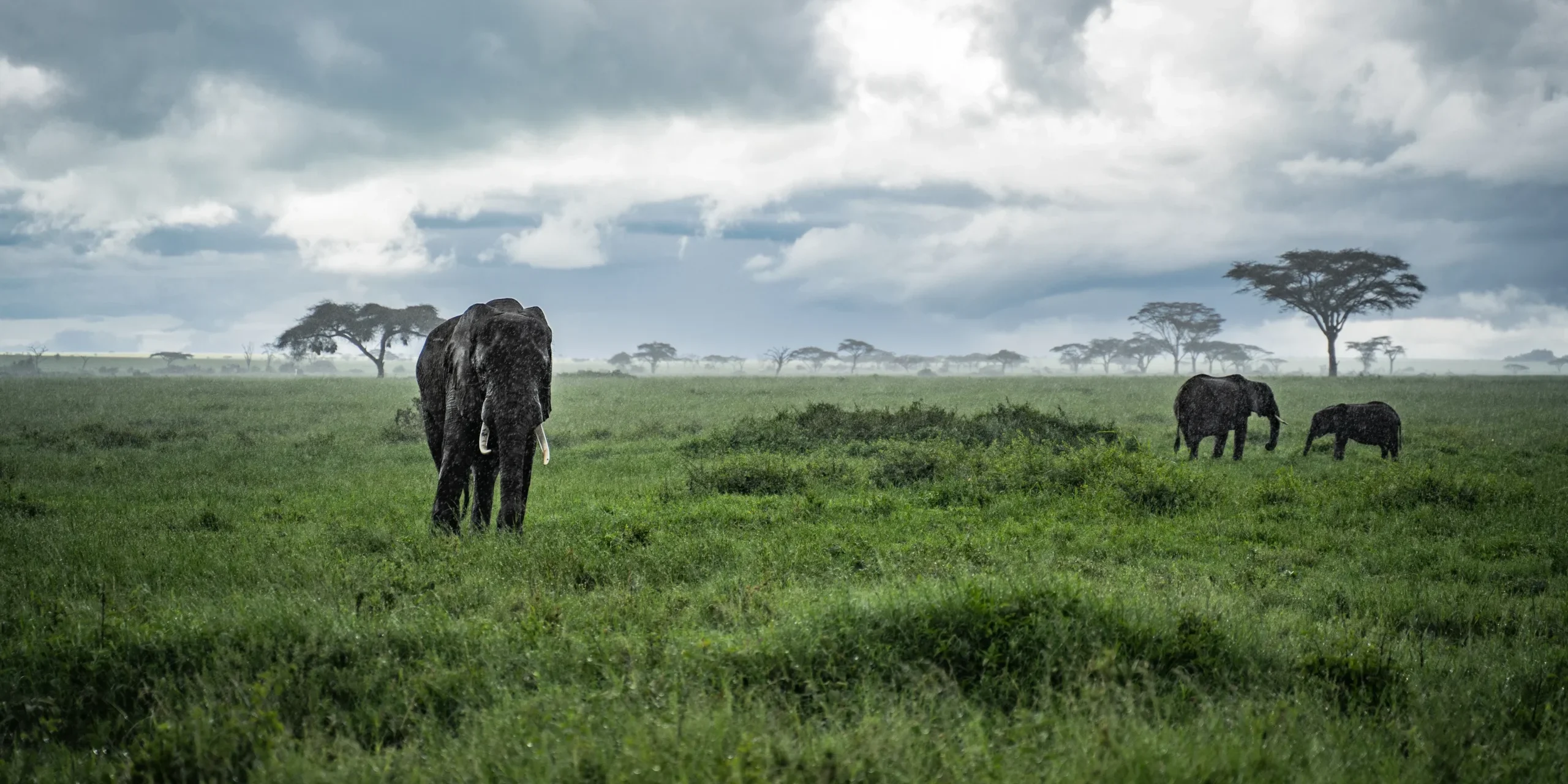
May is generally considered to be a rather unusual month in which to visit the Serengeti, but we consider it to be something of a secret season, with green landscapes, baby animals, the migration rut and pleasantly low visitor numbers.
Conditions
Average daily temperature : 25C/77F
Average nightly temperature : 15C/59F
Rainfall : 70mm/2.8″ : medium
Temperatures and humidities are pretty constant and comfortable year round in Serengeti. The prevailing conditions are warm and sunny, with a reducing chance of intermittent showers and only an outside chance of heavier downpours and prolonged overcast conditions.
Migration
The key action migration action areas at this time are Serengeti Central and Serengeti West.
By now the northern movement of the main herds should be well underway, with the lead animals emerging onto the western plains and heading towards the Grumeti Stream. The rut should be reaching an end by now, so the male wildebeest should be calming down, leaving the females free to spread out a little.
Resident wildlife
With reference to resident wildlife elsewhere in the Serengeti the wildlife viewing is likely to be down from the dry-season highs, the rains of the preceding months still enabling animals to stay away from the permanent water sources and remain more dispersed. However in drier years there may be a start of the inward movement towards the permanent water sources.
Visitor traffic
Visitor numbers usually start to climb through this month, notably in the Seronera and Ndutu areas, but also in the Moru Kopjes area in between, where the migration should be passing through, possibly also out on the plains of the Western Corridor too. Traffic avoidance measures are increasingly recommended, namely booking well in advance to ensure rooms at the best lodges and choosing your safari routes carefully.
The Serengeti Mara area far off to the north remains a blissful backwater in May and still has strong resident wildlife, whilst the remote plains of Serengeti Southeast should once again be very quiet, although the resident wildlife there is not so strong.
wonderfully quiet rutting season
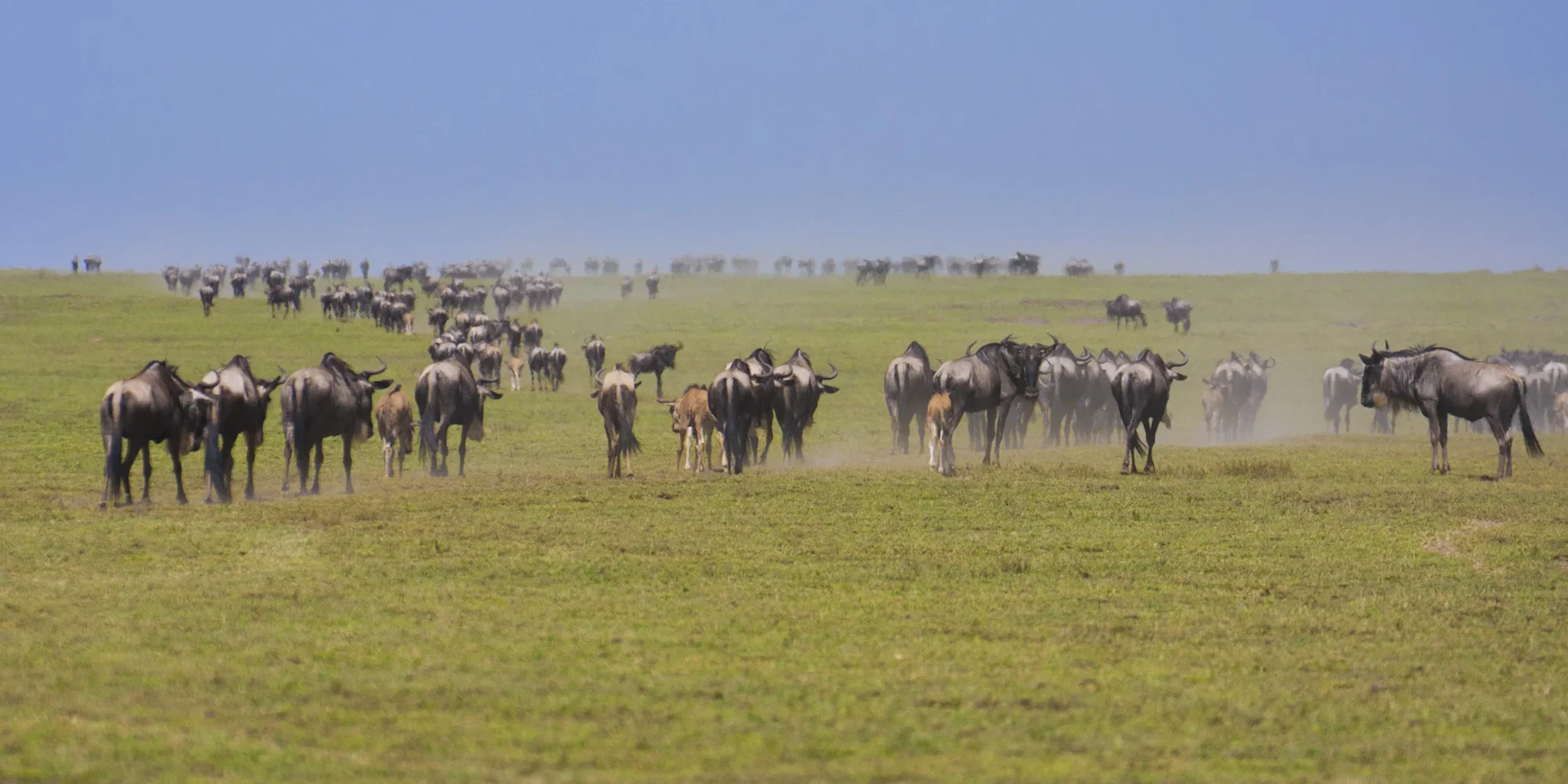
June is generally considered to be a very good month in which to visit the Serengeti, the early dry season, with good weather and relatively low visitor numbers. However, the migration herds can be elusive.
Conditions
Average daily temperature : 25C/77F
Average nightly temperature : 14C/57F
Rainfall : 30mm/1.2″ : low
Temperatures and humidities are pretty constant and comfortable year round in Serengeti. The prevailing conditions are warm and sunny, with a small chance of intermittent showers.
Migration
The key action migration action areas at this time are Serengeti Central and Serengeti West.
By now the northern movement of the main herds should be long established, with the bulk of the herds moving gently through the central and western grasslands. However once the lead animals have crossed the Grumeti Stream, they guide the herds into the woodlands of the Northern Corridor, where they can become much more dispersed and inaccessible for weeks on end.
Resident wildlife
With reference to resident wildlife elsewhere in the Serengeti the wildlife viewing is once again starting to improve as the dry season kicks in and the animals once again start to be drawn in towards the permanent water sources, notably in central areas.
Visitor traffic
Visitor numbers continue to climb through this month, rising from high to very high, notably in the Seronera area and out on the plains of the Western Corridor. Traffic avoidance measures are increasingly recommended, namely booking well in advance to ensure rooms at the best lodges and choosing your safari routes carefully.
The Serengeti Mara area far off to the north should still be a relatively quiet backwater in June and still has strong resident wildlife, whilst the remote plains of Serengeti Southeast should be very quiet, although the resident wildlife there is not so strong.
early dry season, with elusive migration herds
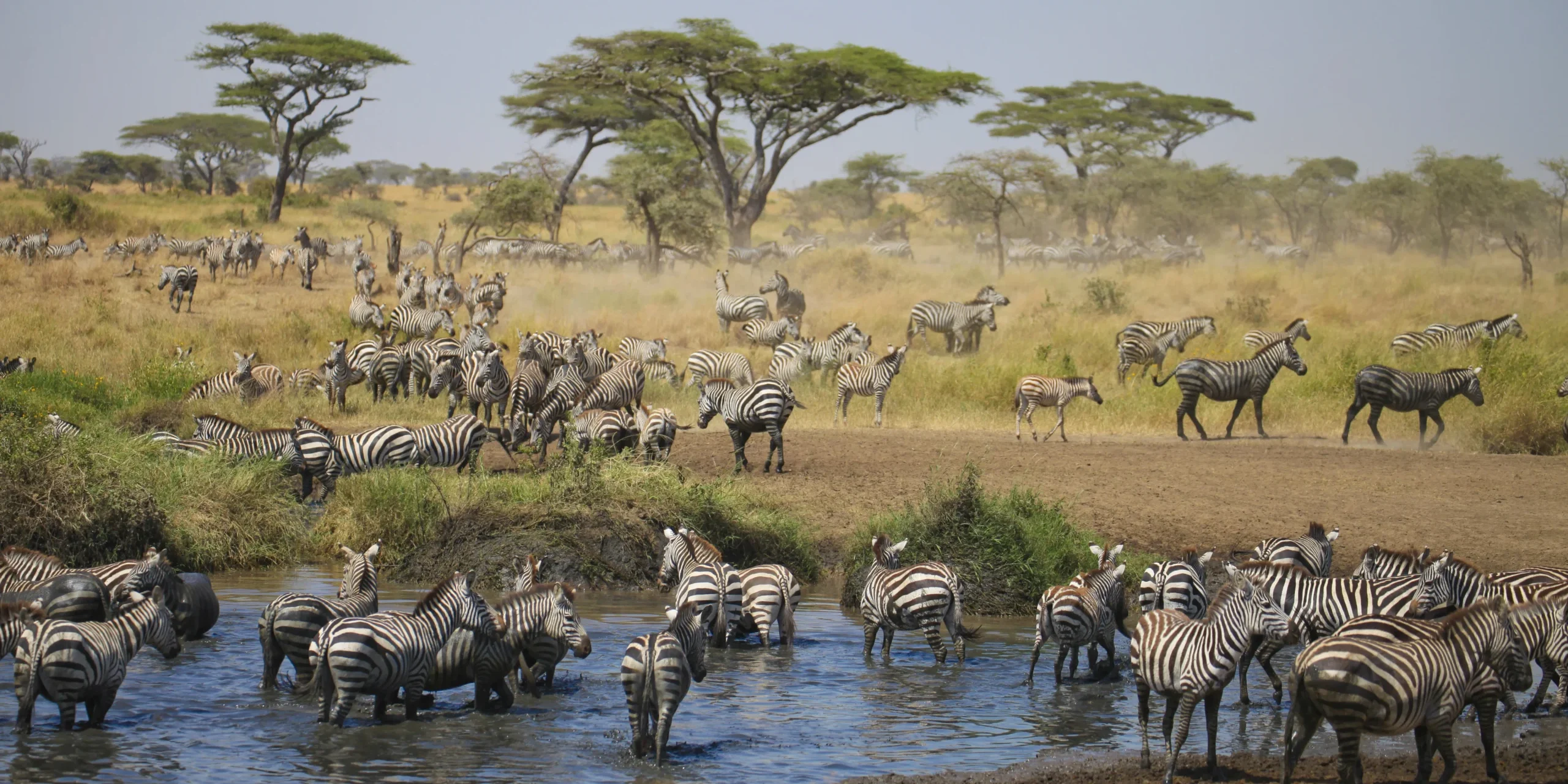
July is generally considered to be a very strong month in which to visit the Serengeti, the dry season, with good weather and strong wildlife viewing (other than potentially elusive migration herds in the first two weeks). However, visitor numbers increase significantly.
Conditions
Average daily temperature : 24C/75F
Average nightly temperature : 13C/55F
Rainfall : 12mm/0.5″ : very low
Temperatures and humidities are pretty constant and comfortable year round in Serengeti. The prevailing conditions are warm and sunny, with a very small chance of intermittent showers.
Migration
The key action migration action area at this time is Serengeti Mara.
Having spend potentially weeks dispersed through the northern woodlands, by around the middle of July the herds usually start to emerge and mass on the open plains of the far north. This is the time of year when big river crossings can often be witnessed.
Resident wildlife
With reference to resident wildlife elsewhere in the Serengeti the wildlife viewing should now be very strong, as the dry season conditions oblige the animals to cluster around the few permanent water sources. This is most pronounced in central areas, where the density of lions and cheetahs rises to become the highest in Africa and sightings are often prodigious.
Visitor traffic
Visitor numbers remain very high through this month, with the main focus now being the Seronera area and the open plains to the far north, where the migration should be arriving. Traffic avoidance measures are now extremely important, namely booking well in advance to ensure rooms at the best lodges and choosing your safari routes carefully.
The remote plains of Serengeti Southeast and Serengeti Southwest should be very quiet, although the resident wildlife there is not so strong.
start of the migration river crossings
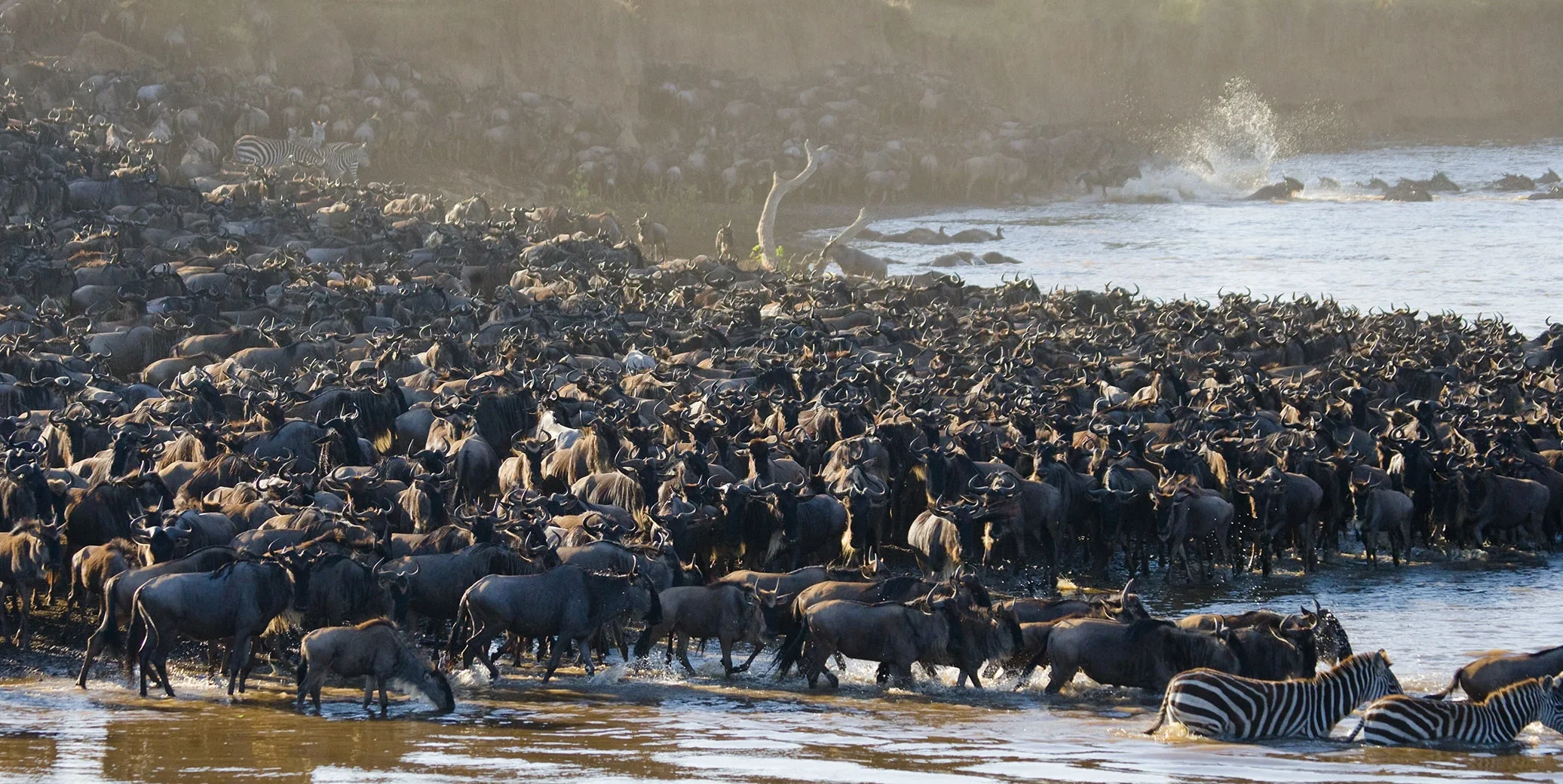
August is generally considered to be a strong month in which to visit the Serengeti, the dry season, with good weather and strong wildlife (including the migration herds). However, visitor numbers are at their highest.
Conditions
Average daily temperature : 25C/77F
Average nightly temperature : 13C/55F
Rainfall : 25mm/1.0″ : low
Temperatures and humidities are pretty constant and comfortable year round in Serengeti. The prevailing conditions are warm and sunny, with a very small chance of intermittent showers.
Migration
The key action migration action area at this time is Serengeti Mara.
By now the herds should be well established on the open plains of the far north, with ongoing river crossings, which can often be witnessed up close.
Resident wildlife
With reference to resident wildlife elsewhere in the Serengeti the wildlife viewing should continue to be very strong, as the dry season conditions oblige the animals to cluster around the few permanent water sources. This is most pronounced in central areas, where the density of lions and cheetahs rises to become the highest in Africa and sightings are often prodigious.
Visitor traffic
Visitor numbers remain reach their peak through this month, with the main focus now being the Seronera area and the open plains to the far north, where the migration should be in position. Traffic avoidance measures remain extremely important, namely booking well in advance to ensure rooms at the best lodges and choosing your safari routes carefully.
The remote plains of Serengeti Southeast and Serengeti Southwest should be very quiet, although the resident wildlife there is not so strong.
great wildlife, but high visitor traffic
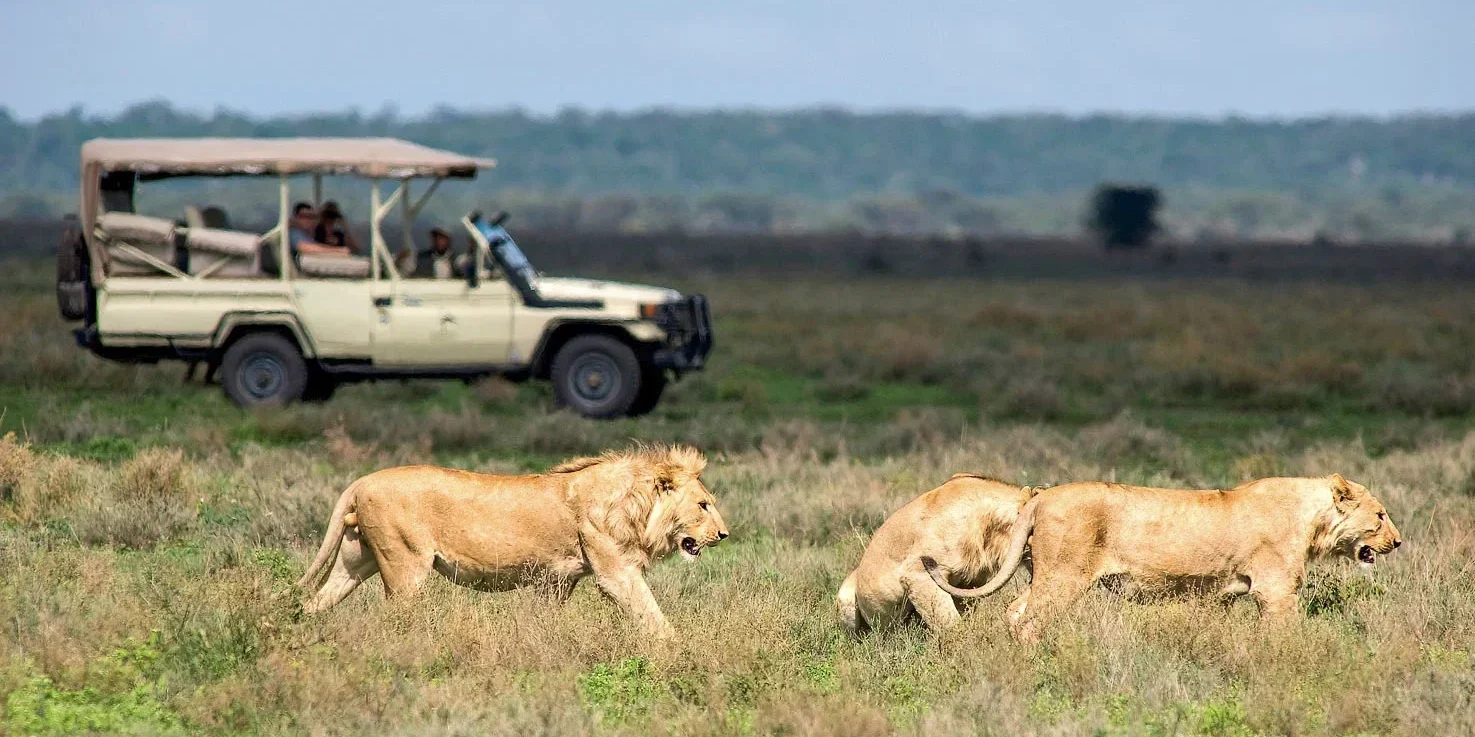
September is generally considered to be a very strong month in which to visit the Serengeti, the dry season, with good weather and strong wildlife (including the migration). However, visitor numbers remain high.
Conditions
Average daily temperature : 26C/79F
Average nightly temperature : 14C/57F
Rainfall : 30mm/1.2″ : low
Temperatures and humidities are pretty constant and comfortable year round in Serengeti. The prevailing conditions are warm and sunny, with a very small chance of intermittent showers.
Migration
The key action migration action area at this time is Serengeti Mara.
Through September, the herds should continue to graze en-masse on open plains of the far north, with continued crossings of the Mara River.
Resident wildlife
With reference to resident wildlife elsewhere in the Serengeti the wildlife viewing should continue to be very strong, as the dry season conditions oblige the animals to cluster around the few permanent water sources. This is most pronounced in central areas, where the density of lions and cheetahs rises to become the highest in Africa and sightings are often prodigious.
Visitor traffic
Visitor numbers start to recede slightly through this month, falling from although tend to remain very high, with the main focus now being the Seronera area and the open plains to the far north, where the migration should be in position. Traffic avoidance measures remain extremely important, namely booking well in advance to ensure rooms at the best lodges and choosing your safari routes carefully.
The remote plains of Serengeti Southeast and Serengeti Southwest should be very quiet, although the resident wildlife there is not so strong.
great wildlife, with high visitor traffic

October is generally considered to be a very strong month in which to visit the Serengeti, the peak of the dry season, with good weather and very strong wildlife (including the migration). Visitor numbers are falling from their peak.
Conditions
Average daily temperature : 27C/81F
Average nightly temperature : 15C/59F
Rainfall : 45mm/1.7″ : low
Temperatures and humidities are pretty constant and comfortable year round in Serengeti, although it may become slightly oppressive in advance of the rains. The prevailing conditions are warm and sunny, with increasing chances of impressive thunderstorms rolling across the plains, accompanied by intermittent showers.
Migration
Through October, the main herds should be well established on the open plains of the Serengeti Mara in the far north, with continued river crossings.
However, there is a small chance that early rains may push the herds south into Serengeti North and Serengeti Central.
Resident wildlife
With reference to resident wildlife elsewhere in the Serengeti the wildlife viewing should continue to be very strong, as the dry season conditions oblige the animals to cluster around the few permanent water sources. This is most pronounced in central areas, where the density of lions and cheetahs rises to become the highest in Africa and sightings are often prodigious.
Visitor traffic
Visitor numbers continue to recede through this month, with the main focus now being the Seronera area and the open plains to the far north, where the migration should still be in position. Traffic avoidance measures remain extremely important, namely booking well in advance to ensure rooms at the best lodges and choosing your safari routes carefully.
The remote plains of Serengeti Southeast and Serengeti Southwest should be very quiet, although the resident wildlife there is not so strong.
great wildlife, with easing visitor traffic

November is generally considered to be a rather unpredictable month in which to visit the Serengeti, with unpredictable rain showers having dramatic effects on wildlife movements. With good planning it can be great.
Conditions
Average daily temperature : 27C/81F
Average nightly temperature : 15C/59F
Rainfall : 95mm/3.7″ : medium
Temperatures and humidities are pretty constant and comfortable year round in Serengeti, although it may become slightly oppressive in advance of the rains. The prevailing conditions are warm and sunny, with a likelihood of impressive thunderstorms rolling across the plains, accompanied by intermittent showers and occasional torrential downpours.
Migration
When it comes to migration movements, this month can be very difficult to call.
Up to now the herds should have been ranged across the plains of Serengeti Mara and Maasai Mara (Kenya) .
However, at the first sign of lightning on the volcanoes of Ngorongoro far off the south, the herds lift their heads and start heading off in that direction, apparently led by the zebras. Their aim is to reach their calving grounds just as the plains are starting to sprout the nutritious short grasses that they crave. This movement can start any time between Oct-Dec, so the herds could be almost anywhere.
It’s therefore usually a good idea to plan to stay in all three of Serengeti Mara, Serengeti Central and Serengeti Southcentral to ensure you maximise your chances of good sightings.
Resident wildlife
With reference to resident wildlife, as the long dry season drags on, the animals are gasping for rain. The grazing around the permanent waterholes has long since been eaten up and most herbivores are now migrating daily in and out between water and fodder, always running the risk of getting nailed by lions at the waterholes. They too are ready to disperse, but cannot do so until significant rains occur, which is usually at least a few weeks later. So lion and cheetah viewing should remain pretty reliable in central areas throughout this month.
Visitor traffic
Visitor numbers should be relatively low through this month, with the main focus now being the Seronera area and the open plains to the far north, where the migration should still be in position. Traffic avoidance measures should be a lot less important, but we still recommend choosing your safari routes carefully.
start of the migration southbound trek

December is generally considered to be a good month in which to visit the Serengeti, with early migration calving season action in the south and some lovely quiet areas further north. The weather is usually good, but rain showers can be disruptive.
Conditions
Average daily temperature : 26C/79F
Average nightly temperature : 15C/59F
Rainfall : 109mm/4.3″ : high
Temperatures and humidities are pretty constant and comfortable year round in Serengeti, although it may become slightly oppressive in advance of the rains (if they arrive this late). The prevailing conditions are warm and sunny, with a likelihood of impressive thunderstorms rolling across the plains, accompanied by intermittent showers and occasional torrential downpours.
Migration
December should see the arrival of the main herds into central areas and edging down onto the main southern plains. Their aim is to reach their calving grounds just as the plains are starting to sprout the nutritious short grasses that they crave. However the exact timing of this movement is notoriously unpredictable, so the herds could be almost anywhere in the Serengeti region.
It’s therefore usually a good idea to plan to stay at a lodge in each of Serengeti Mara, Serengeti Central and one or more of the more southerly areas.
Resident wildlife
With reference to resident wildlife, as the long dry season drags on, the animals are gasping for rain. The grazing around the permanent waterholes has long since been eaten up and most herbivores are now migrating daily in and out between water and fodder, always running the risk of getting nailed by lions at the waterholes. By now the rains should have arrived and the animals should have started to disperse, but you should be able to find plenty of lions and cheetahs between the central and southern areas.
Visitor traffic
Visitor numbers continue to remain at relatively low levels for the first half of the month, after which they leap dramatically to their peak levels of uncomfortably high, mainly focused on central areas and in the migration areas around Ndutu. Once this increase takes place, traffic avoidance measures become essential, namely booking well in advance to ensure rooms at the best lodges and choosing your safari routes carefully.
It might also still be worth including Serengeti Mara, where the migration herds may still be in position and the resident wildlife is strong, but which should be very peaceful and removed from the holiday crowds.
start of the migration river crossings

Further reading
- Safari in Serengeti
- The best ways to experience the Serengeti migration
- The best balloon safari in Serengeti
- The best ways to avoid traffic in Serengeti
- The best time of year for safari in Serengeti
- The best locations for safari in Serengeti
- Safari in Serengeti Central
- Safari in Serengeti Grumeti
- Safari in Serengeti Mara
- Safari in Serengeti North
- Safari in Serengeti Southcentral
- Safari in Serengeti Southeast
- Safari in Serengeti Southwest
- Safari in Serengeti West
let us know your thoughts about Tanzania
and we will help you create the perfect trip
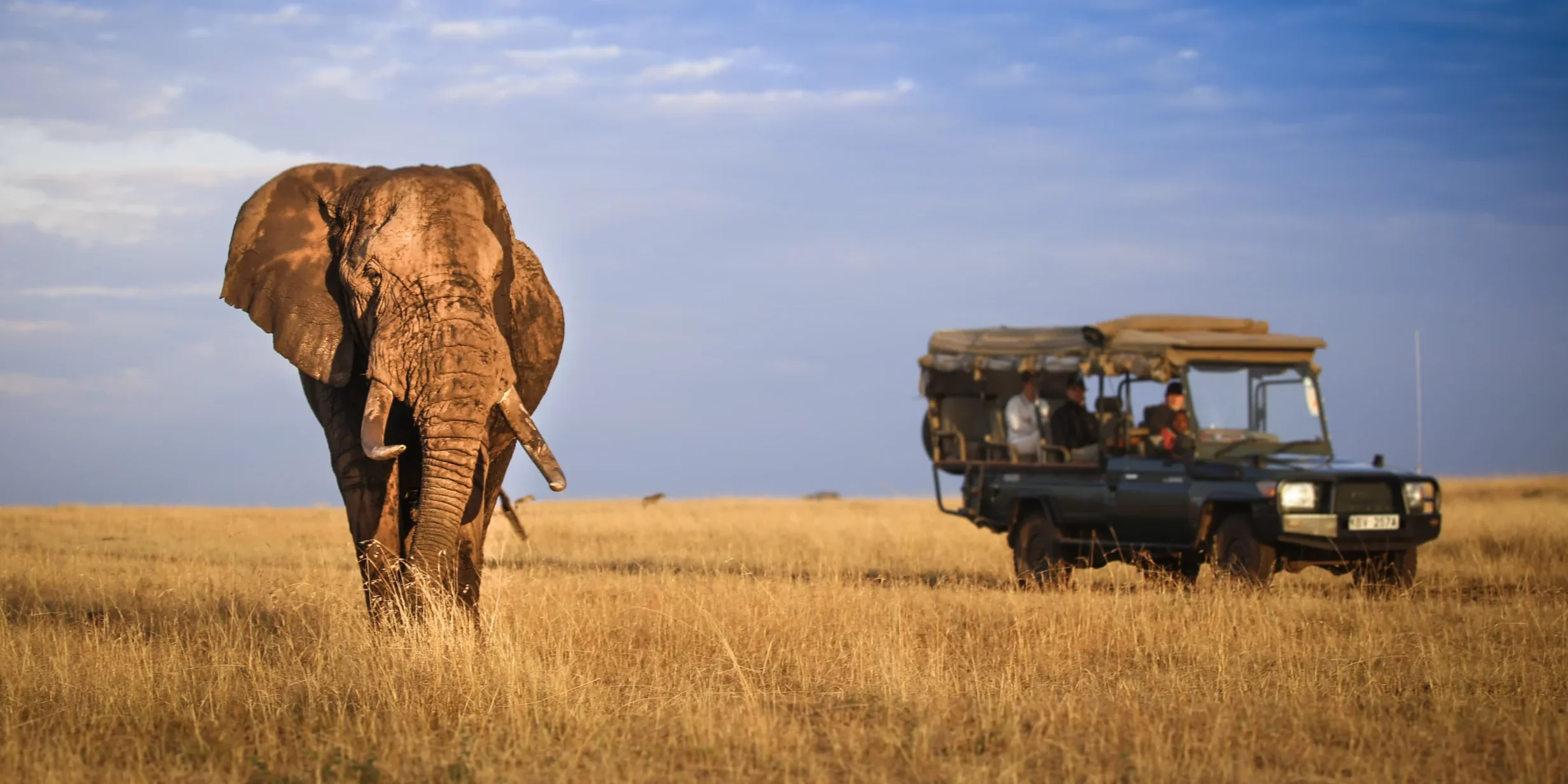
Extraordinary tailor-made adventures,
from earthy and edgy to easy and extravagant
From around USD 2500 per person, you set the ceiling
Sample Trips
Here are some of our popular trip shapes
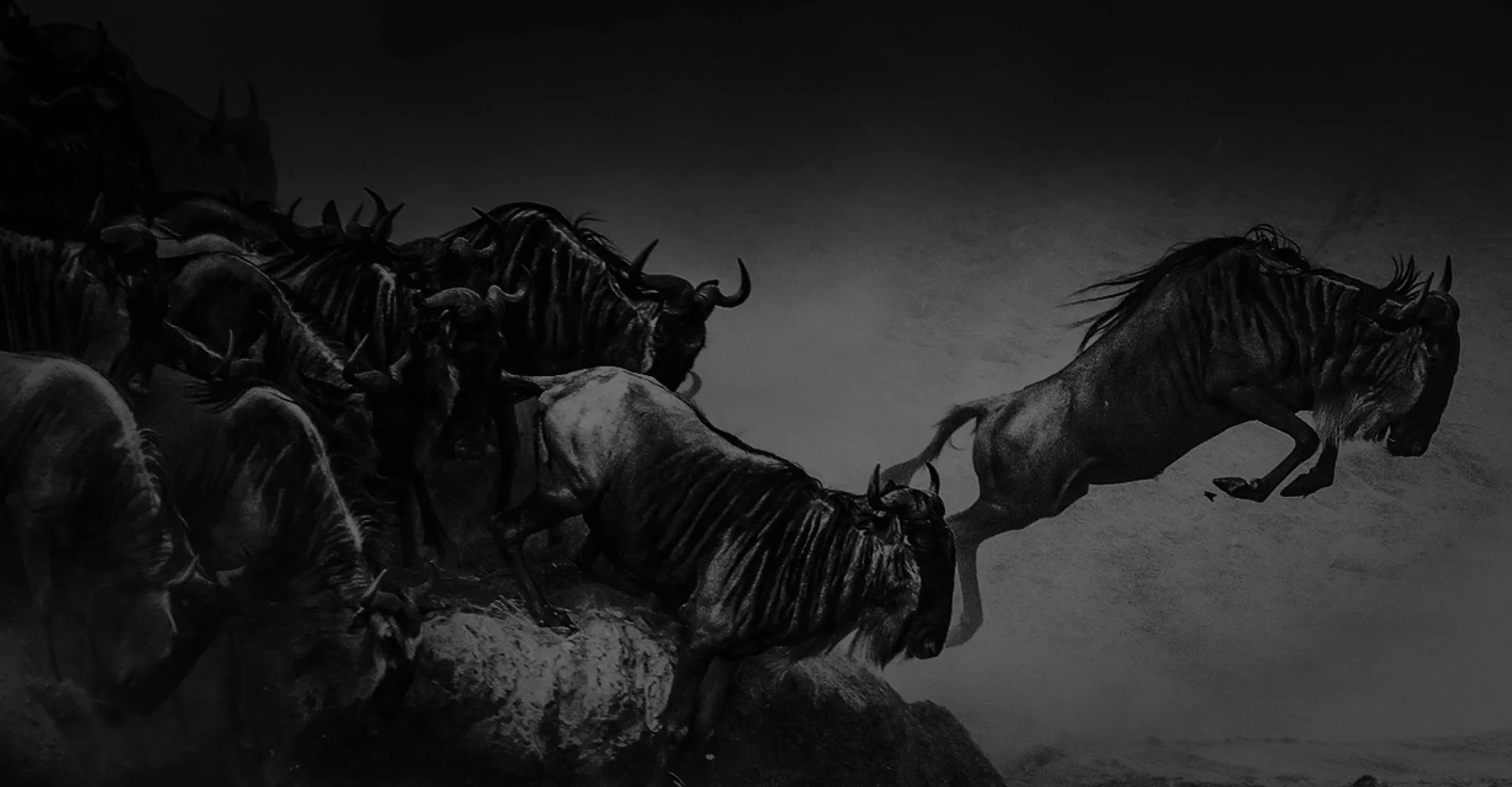
Get started on your trip
It’s never too soon to get in touch, we are here to help with every stage of your planning.
Best Lodges
We regularly inspect and photograph all of the the best lodges, to ensure that we always recommend the most suitable options
Key Locations
Take a look around related locations. Click ‘View more’ to explore locations further afield.
Where Next?
Where Next?
We offer trips to dozens of fabulous countries.
Might one of these might be your next great adventure?

Please rotate your screen.
